Soft spring rain tapping bamboo leaves never fails to remind gardeners why Asian landscaping endures: it is art, sanctuary, and ecosystem all at once. Today’s designers lean on centuries-old principles — harmony, asymmetry, restraint — yet weave in local plants, permeable materials, and clever water recycling to keep the style sustainable and fresh. Whether you have a suburban quarter-acre or a sunny balcony, Asian landscape ideas offer measured calm, layered textures, and sensory richness without demanding constant fuss. Ready to borrow their contemplative magic? Explore the following twenty-five concepts and see how effortlessly serenity can take root outside your own door.
1. Zen Gravel Courtyard for Asian Landscape Serenity
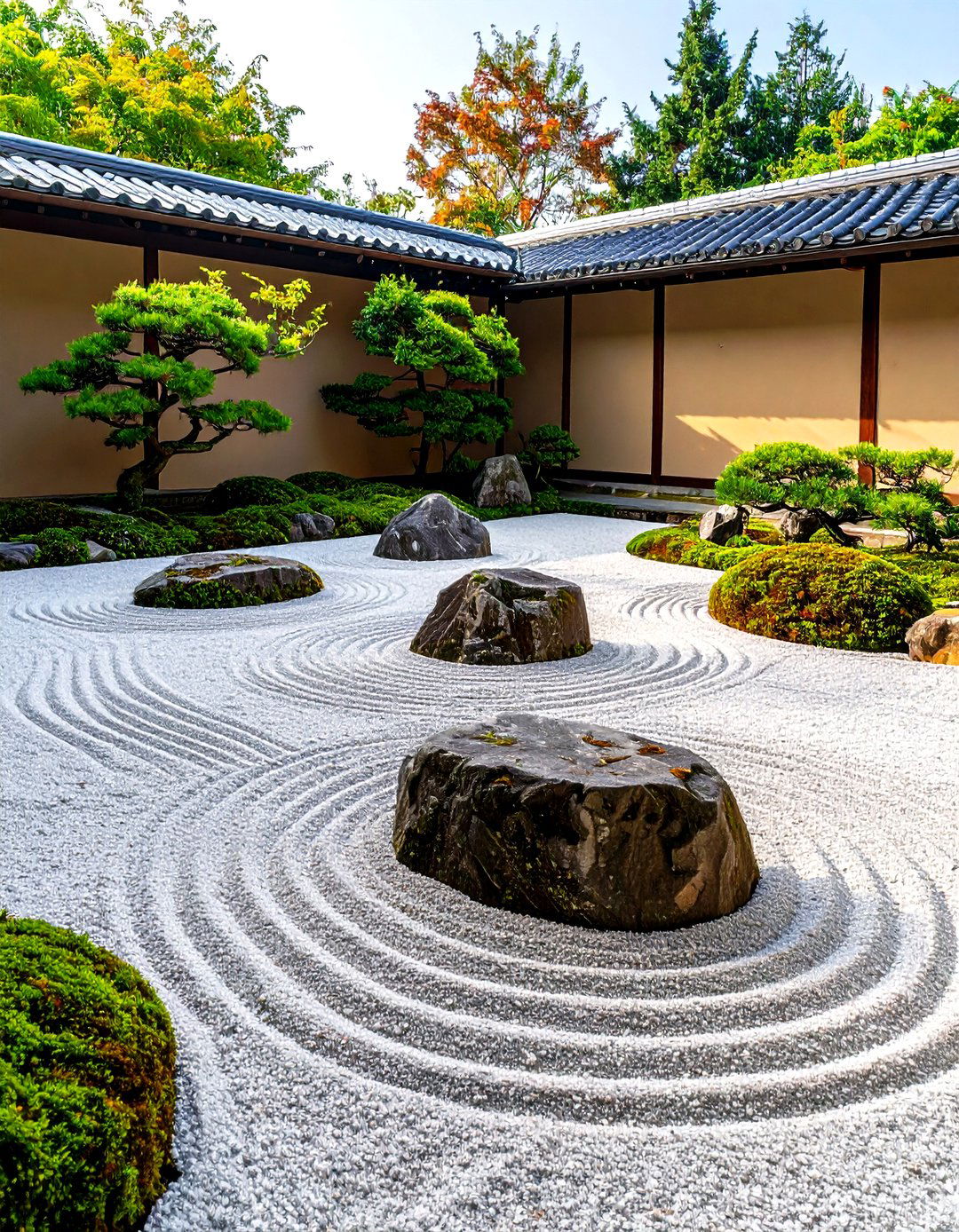
A crisp bed of pale gravel raked into flowing lines instantly signals calm while keeping maintenance low. Begin by framing the space with weather-worn granite edging, then add three sculptural boulders in an irregular triangle to honor Fukinsei — the principle of asymmetry prized in Asian landscapes. Rake concentric or directional waves each week; the meditative act refreshes both mind and surface pattern. Minimalist tufts of dwarf mondo grass soften corners, and a discreet drip line beneath the gravel keeps dust down during dry spells. Rely on shade-tolerant moss between stones to blur edges and invite close observation of texture.
2. Tranquil Koi Pond as a Living Centerpiece

For many Asian gardens, water is the beating heart, and a koi pond provides color, sound, and life in one feature. Opt for an irregular shoreline lined with basalt cobbles to mimic natural banks. Install a small biofiltration stream so water enters on one side and exits through a stone spillway on the other, keeping circulation high and algae low. Floating lilies shade fish while emergent irises add vertical rhythm. A simple cedar bench set a meter back invites lingering, and underwater lights reveal amber and white koi silhouettes gliding beneath the moonlit surface.
3. Bamboo Screening Wall for Whispering Privacy
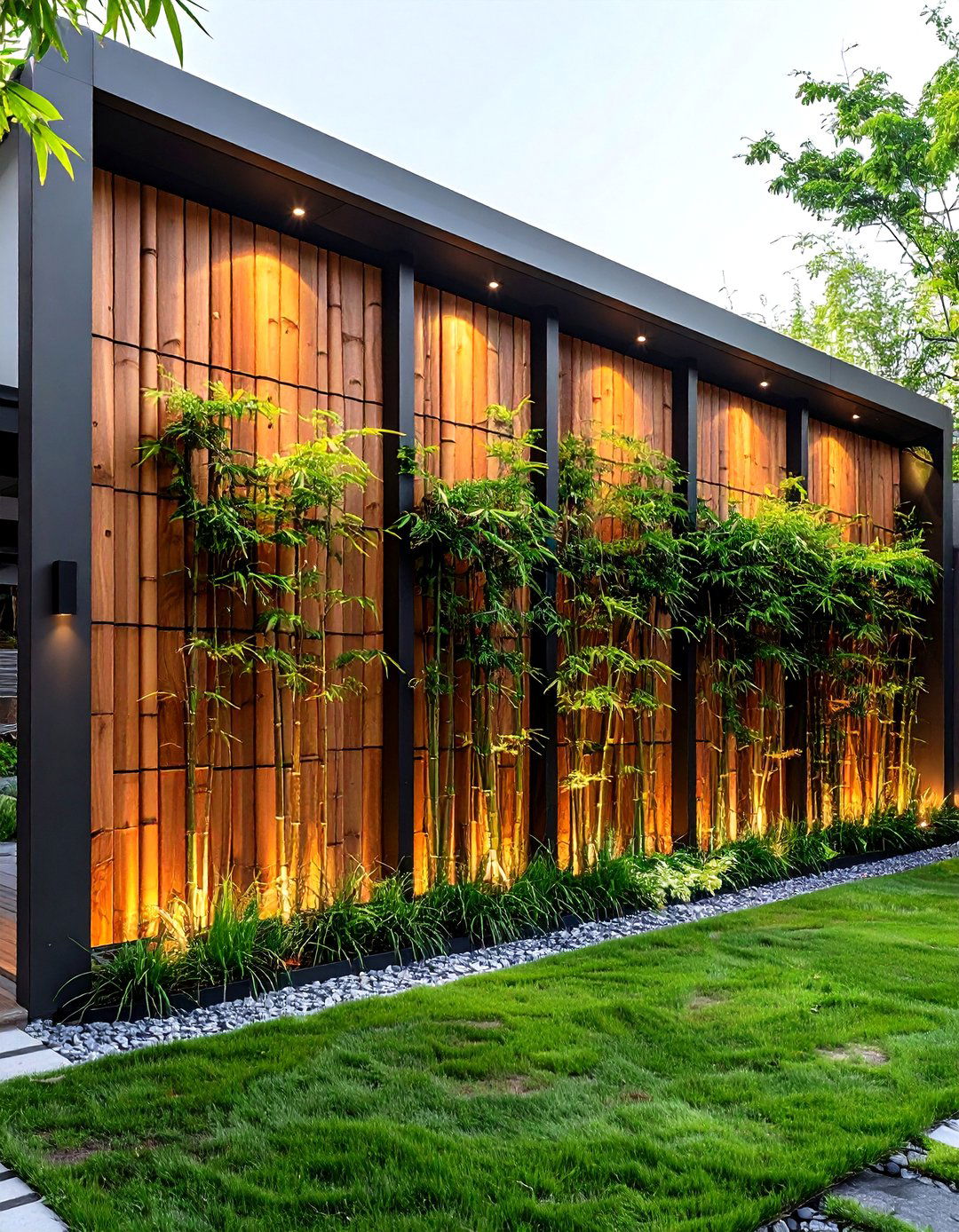
Owing to its quick growth and soothing rustle, clumping bamboo is a perfect green screen along fences that face neighbors. Set it in a 60-centimeter-deep root barrier to prevent spread, then underplant with shade-loving Japanese forest grass for tiered texture. For a contemporary twist, alternate live culms with narrow panels of black-stained timber; the graphic contrast accentuates bamboo’s lemon-green stems. Hidden path lights aimed upward exaggerate the evening sway, creating living kinetic art while muffling street noise. Annual thinning of older canes preserves airflow and keeps the grove luminous, not dense.
4. Moon Gate Entry Framing the Landscape
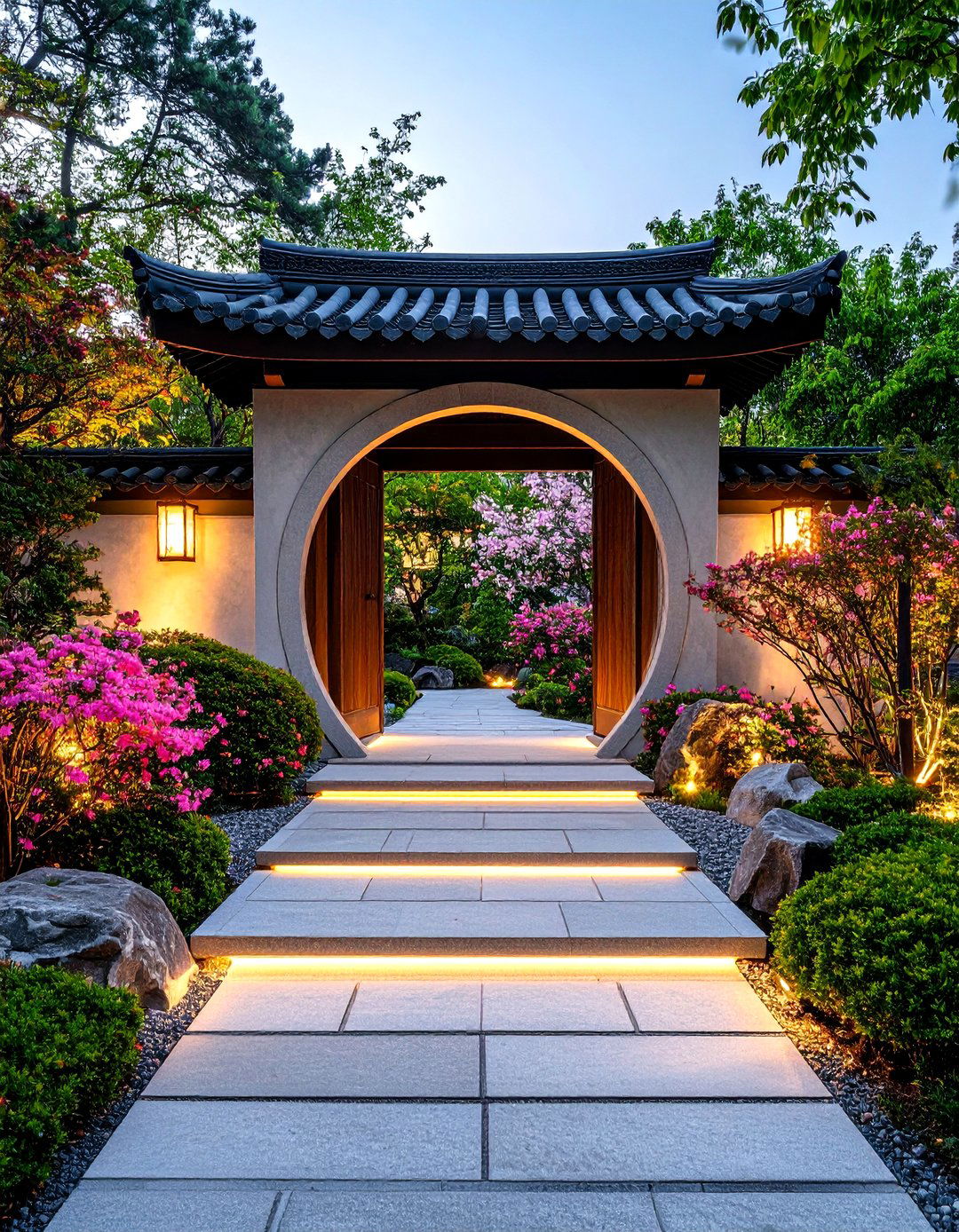
Few architectural gestures announce an Asian landscape quite like a circular moon gate. Constructed of smooth gray masonry or bent laminated cedar, its perfect roundness represents harmony and renewal. Position the gate to frame a focal vignette — perhaps a solitary pine or a distant lantern — so every crossing feels ceremonial. Stone pavers that widen just after the threshold amplify this sense of arrival, while dwarf azaleas soften the base. At night, a concealed LED strip along the inner arch glows like rising moonlight, turning ordinary comings and goings into mindful transitions.
5. Stone Lantern Lighting Accents for Timeless Glow
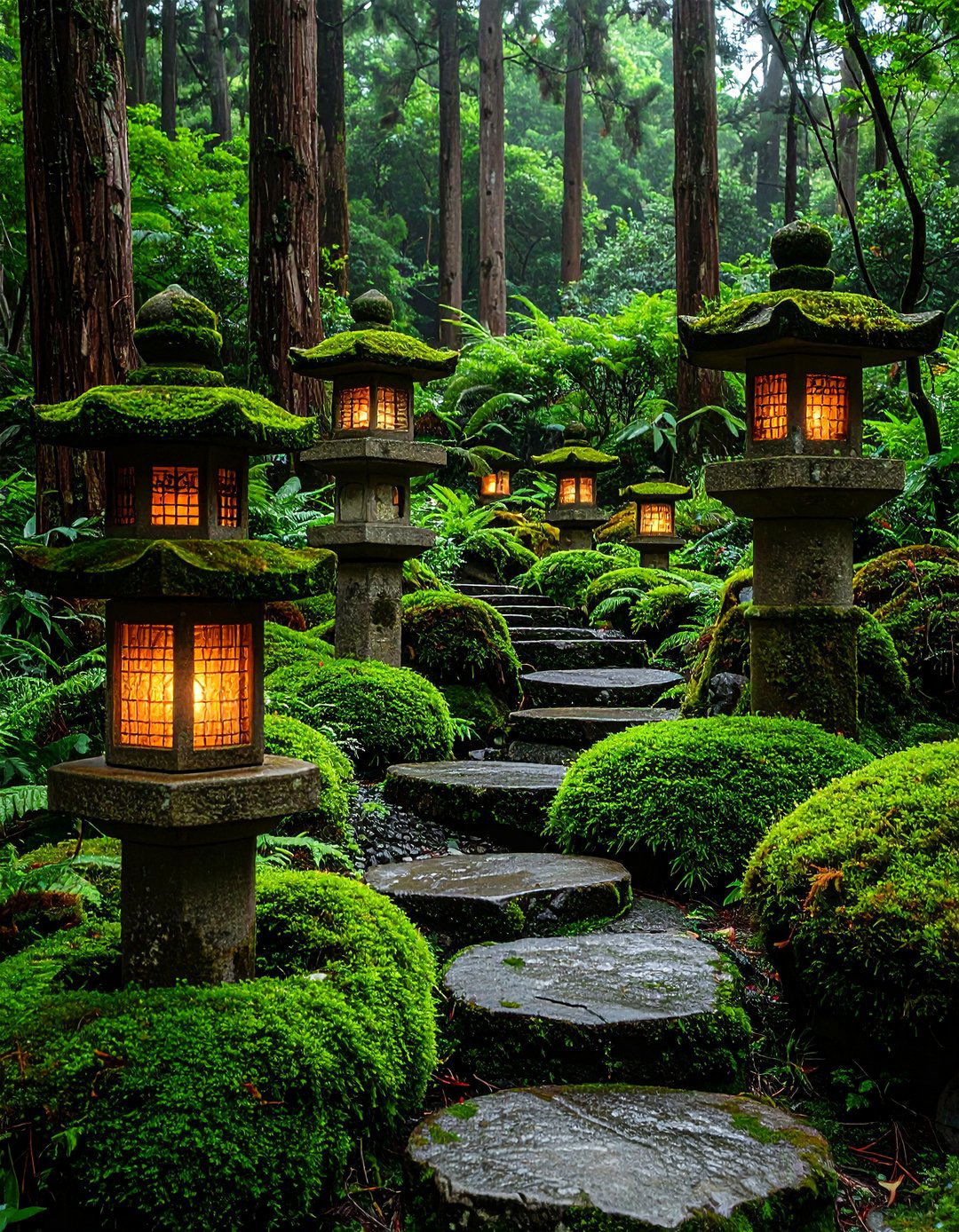
Stone tōrō lanterns add sculptural heft by day and a cozy amber glow after sunset. Choose granite or andesite models proportional to surrounding shrubs: knee-high for courtyard beds, chest-high for open lawns. Inset a low-wattage LED candle to avoid heat and fire risk, and angle the opening so light spills toward pathways, not the sky. Pair each lantern with moss clumps and low ferns to create age-old context even in new gardens. Because real stone weathers handsomely, it only grows more authentic as seasons pass. Periodic brushing removes algae while preserving patina.
6. Minimalist Moss Carpet for Soft Ground Plane
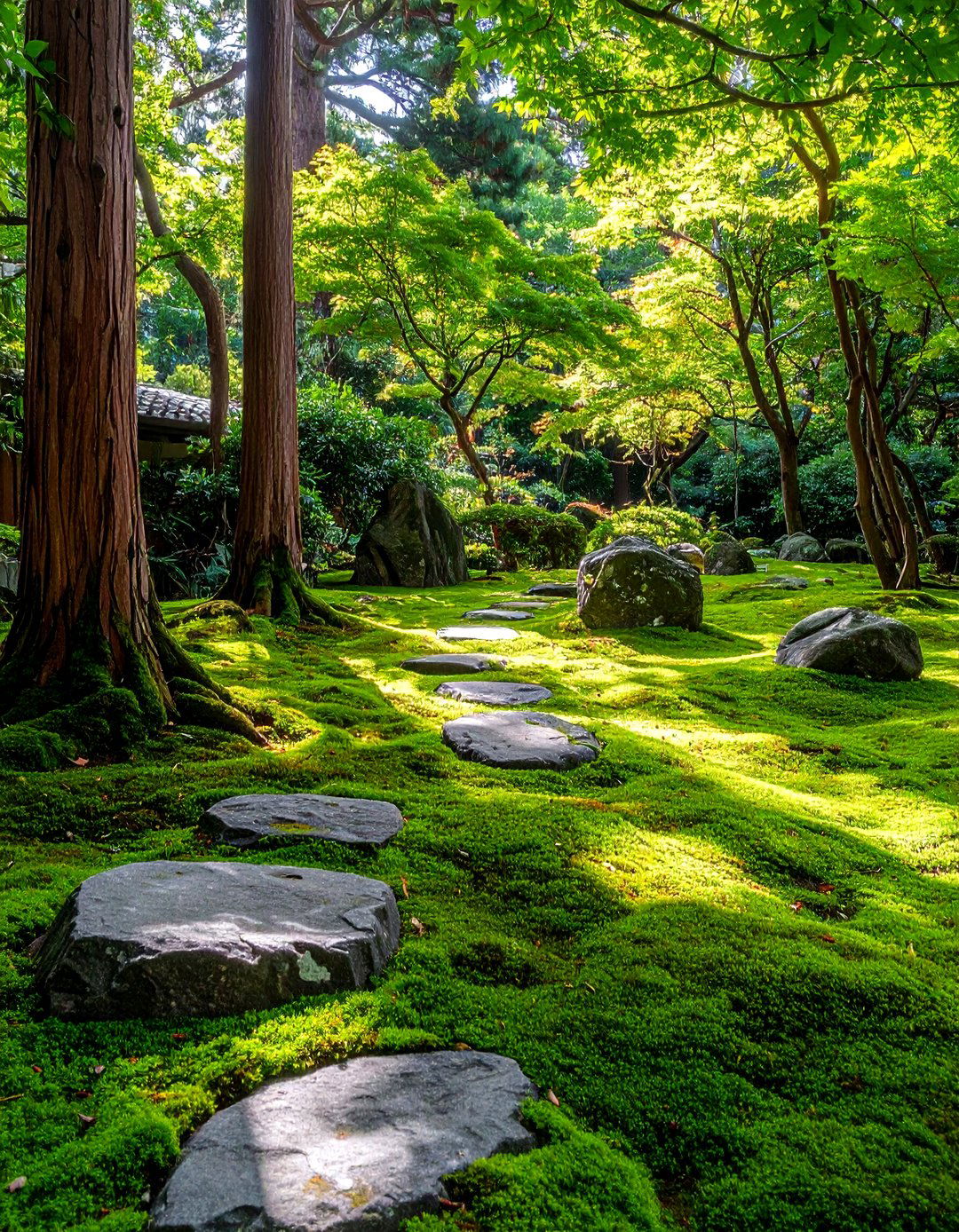
Unlike lawns that demand weekly mowing, a living sheet of moss turns shade into velvety green stillness. Remove existing turf, adjust pH to slightly acidic, then press in cultivated moss sheets or fragments from reputable suppliers (never wild-harvest). Misting twice daily for the first month encourages knitting; afterward, natural rainfall usually suffices. Place upright accents — a driftwood snag, a weathered stone — so the moss acts like negative space around art. Fall leaves must be gently blown off to avoid rot, but otherwise this carpeting asks little and offers meditative quiet underfoot.
7. Stepping-Stone Pathway Curving Through Plantings
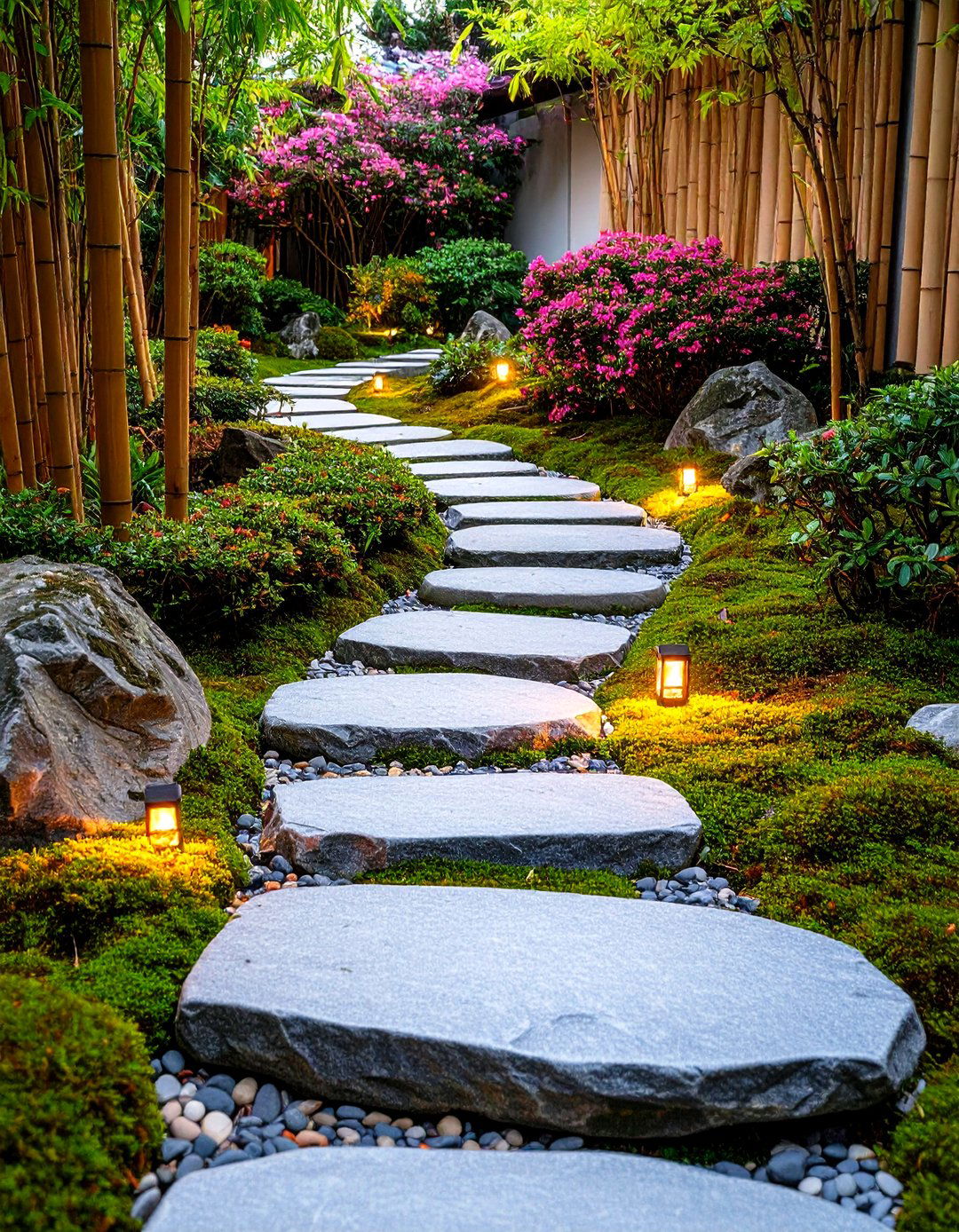
A procession of flat granite or bluestone slabs set into ground-covering thyme provides both function and poetry. Stagger stones in unexpected rhythms to slow footsteps, letting visitors notice bamboo shadows or the scent of Osmanthus as they pass. Keep joints tight enough for confident footing yet wide enough for moss to stitch edges. Lighting should stay low — think miniature recessed LEDs — in order not to compete with moonlight or lanterns. By guiding the journey rather than dictating speed, a stepping-stone path embodies the Asian landscape faith in discovery over destination.
8. Cascading Rock Waterfall for Dynamic Energy
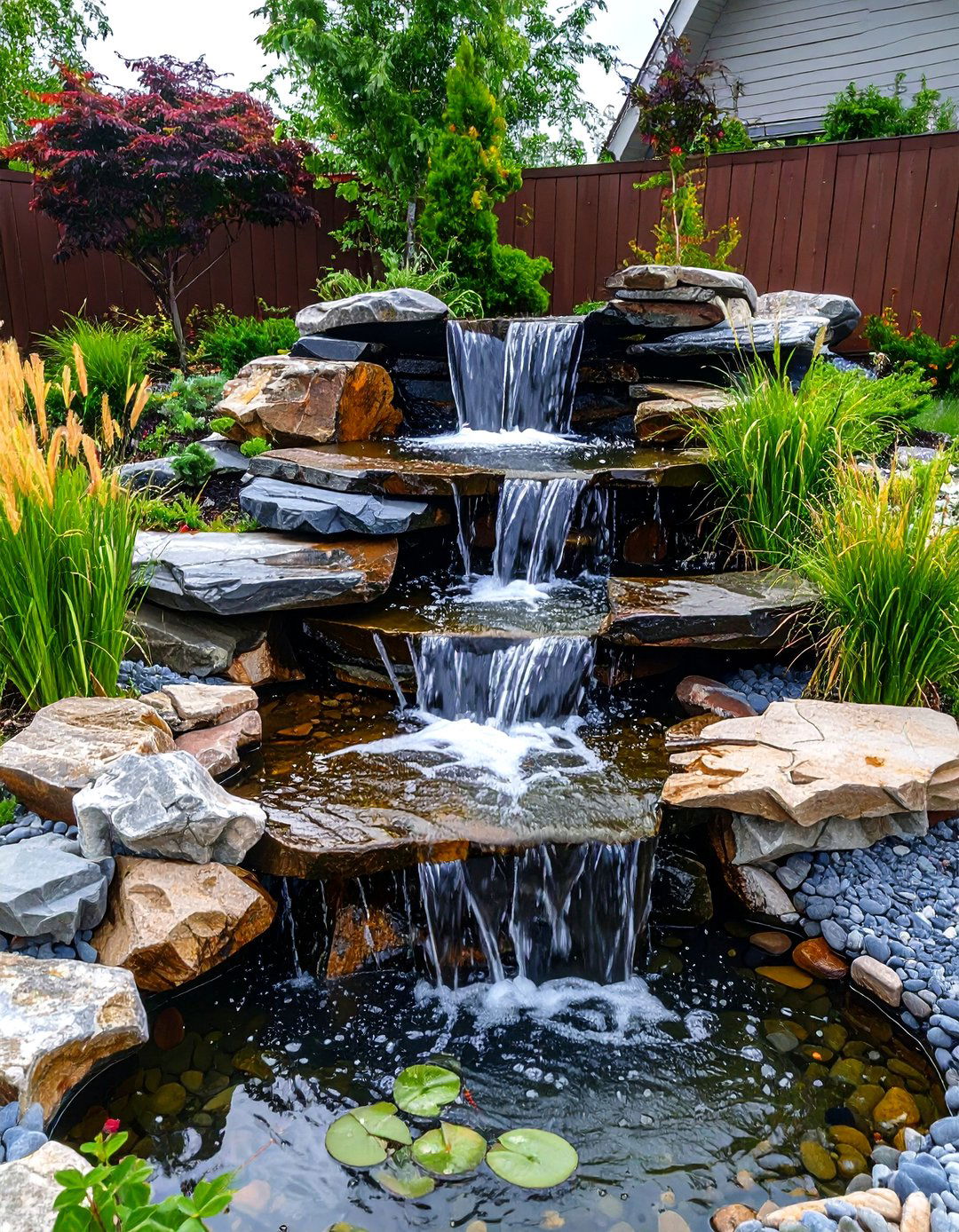
Where terrain slopes, a layered waterfall introduces movement that balances garden stillness. Stack flat slate shelves so water descends in thin veils, creating soothing white noise. A hidden pump recirculates flow into a lower gravel basin, which doubles as a habitat for dragonflies and small frogs. Surround rocks with Japanese sweet flag and golden sedges to contrast dark stone. The sound masks urban hum and draws visitors deeper, illustrating yin-yang balance between solid rock and shifting water — a core Asian landscape motif.
9. Compact Tea Garden Nook for Quiet Reflection
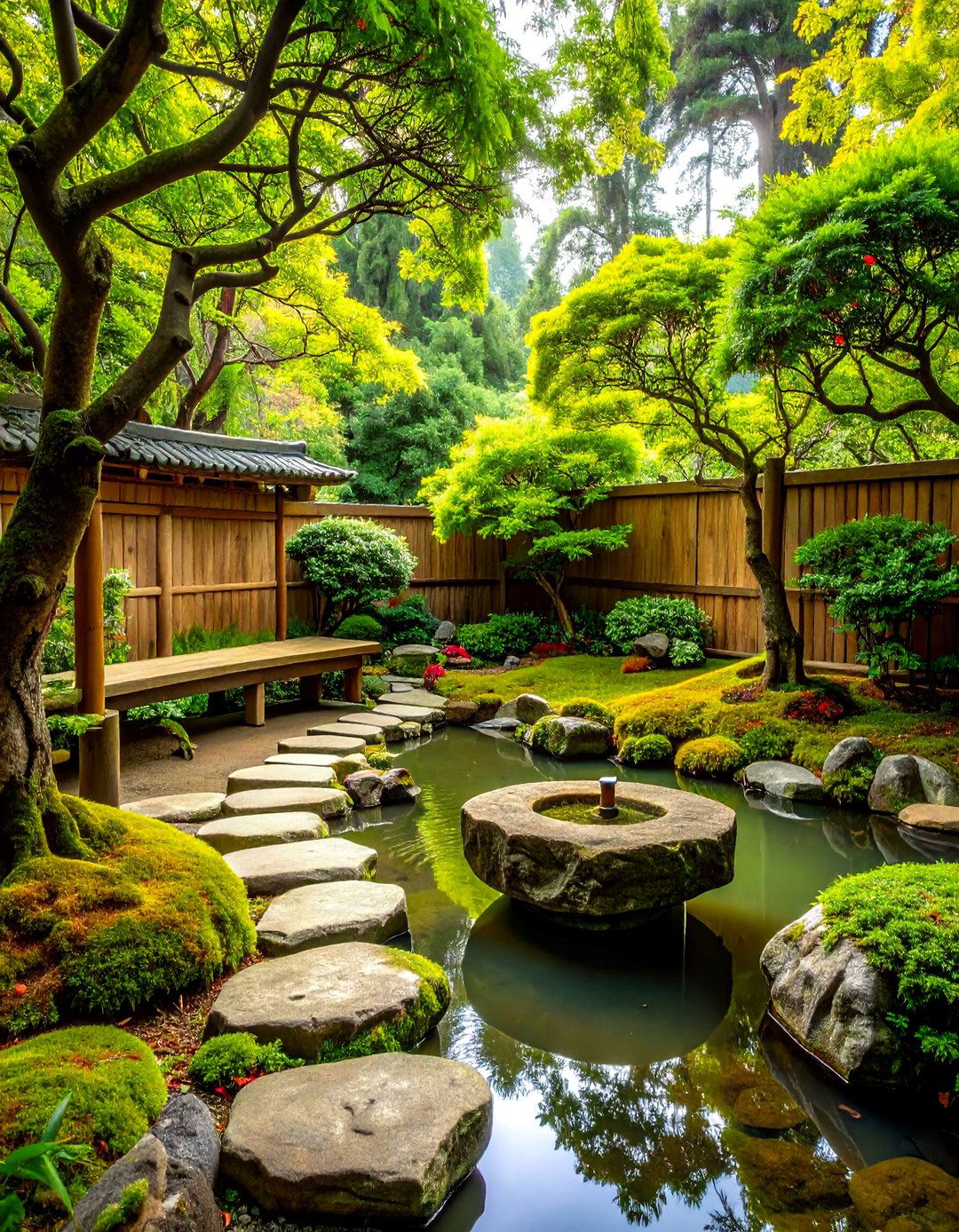
Even a five-square-meter corner can echo the intimacy of a roji, the approach to a traditional tea house. Define the nook with aromatic hinoki cypress fencing and an aged water basin (tsukubai) fed by a bamboo spout. Flat stepping stones guide you to a simple bench of rough-hewn cedar where one could pause with a cup of sencha. Plant fragrant sarcococca and evergreen camellia so winter still offers subtle bloom and scent. Because every element is scaled down, the space feels secluded yet instantly reachable for morning mindfulness.
10. Bonsai Terrace Showcasing Living Sculptures
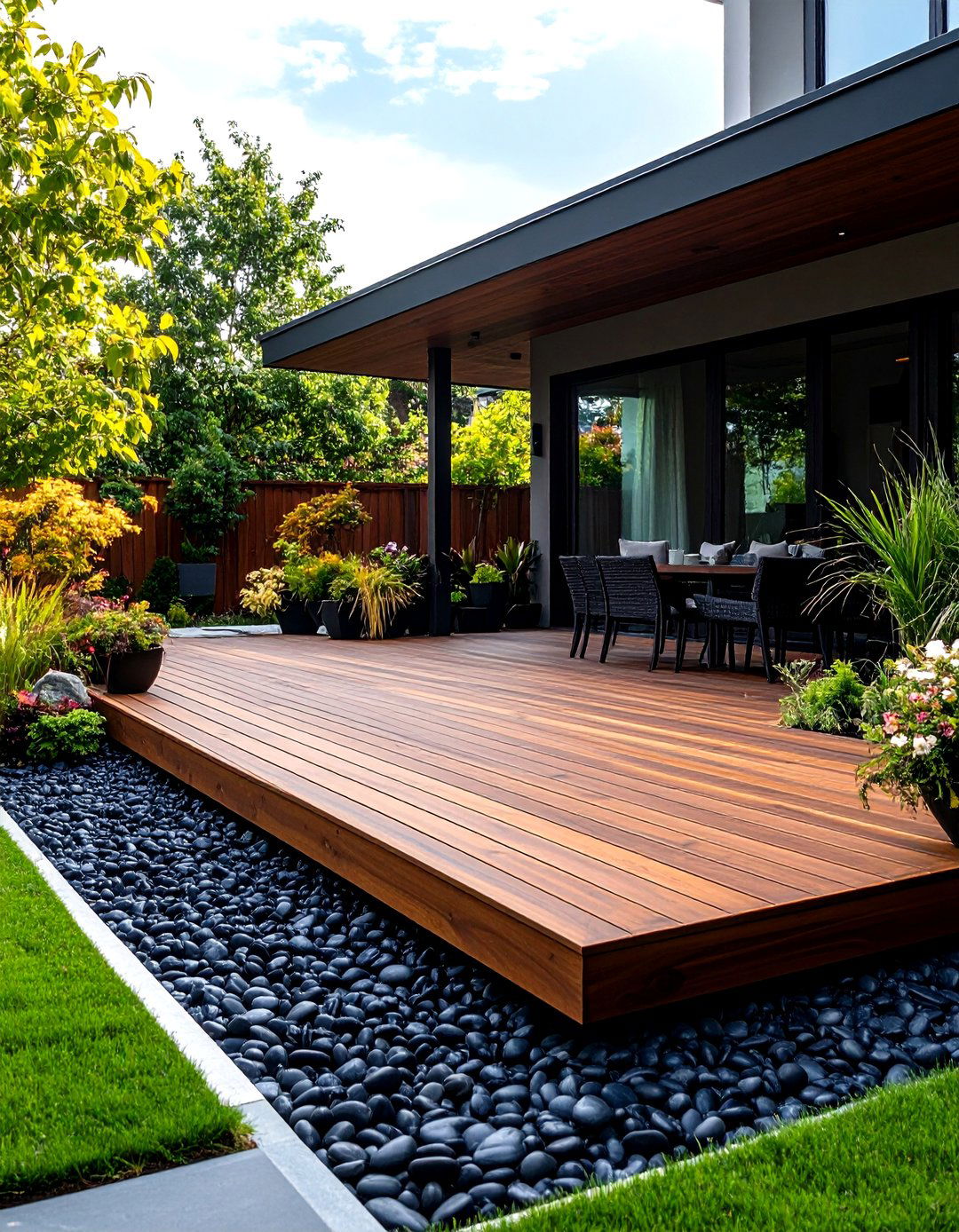
Raising bonsai to eye level on a dedicated deck celebrates each tree’s artistry while protecting roots from ground pests. Construct tiers of rot-resistant ipe or recycled plastic lumber, leaving finger-width gaps for drainage. Arrange pots by visual weight, not strict symmetry — placing a gnarly juniper beside a delicate flowering quince heightens drama. Integrate a narrow rill along the front edge; its trickle humidifies foliage on hot afternoons. Adding an overhead shade cloth frame lets even full-sun patios host prized miniature pines without scorch, turning a mundane balcony into a living gallery.
11. Pagoda Sculpture Focal Point Anchoring Landscape
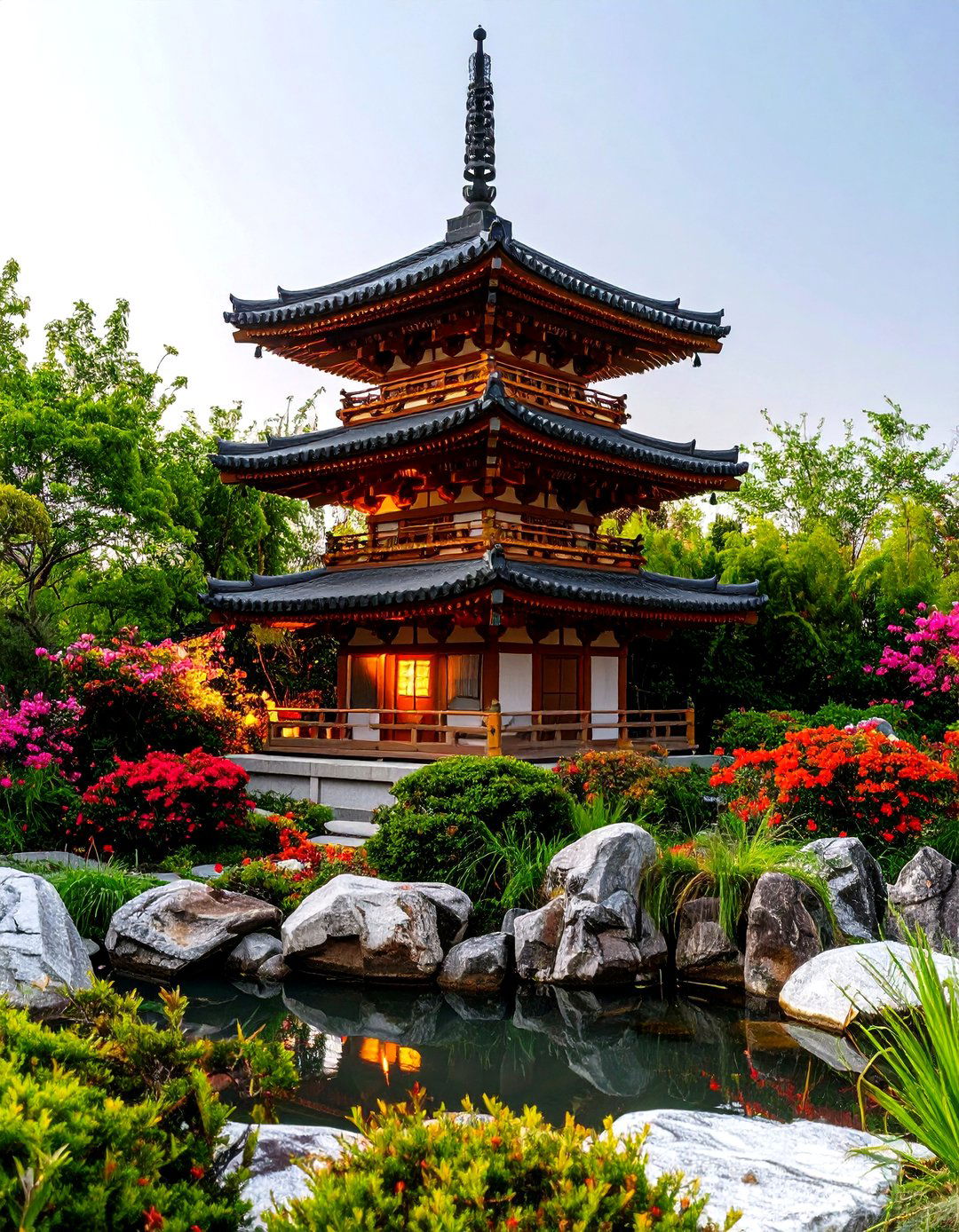
A multi-tiered stone or metal pagoda provides vertical punctuation amid low plantings. Situate it at a path junction or end of a long vista to draw the eye forward. Surround the base with low-mounding azaleas and Hakone grass so the tower appears to rise from foliage waves. Subtle uplighting dramatizes tiers and shadow gaps, giving depth after dark. Because pagodas symbolize sacred mountains, anchoring one within an Asian landscape cultivates both reverence and strong spatial hierarchy.
12. Lotus Basin Reflecting Pool for Meditative Depth
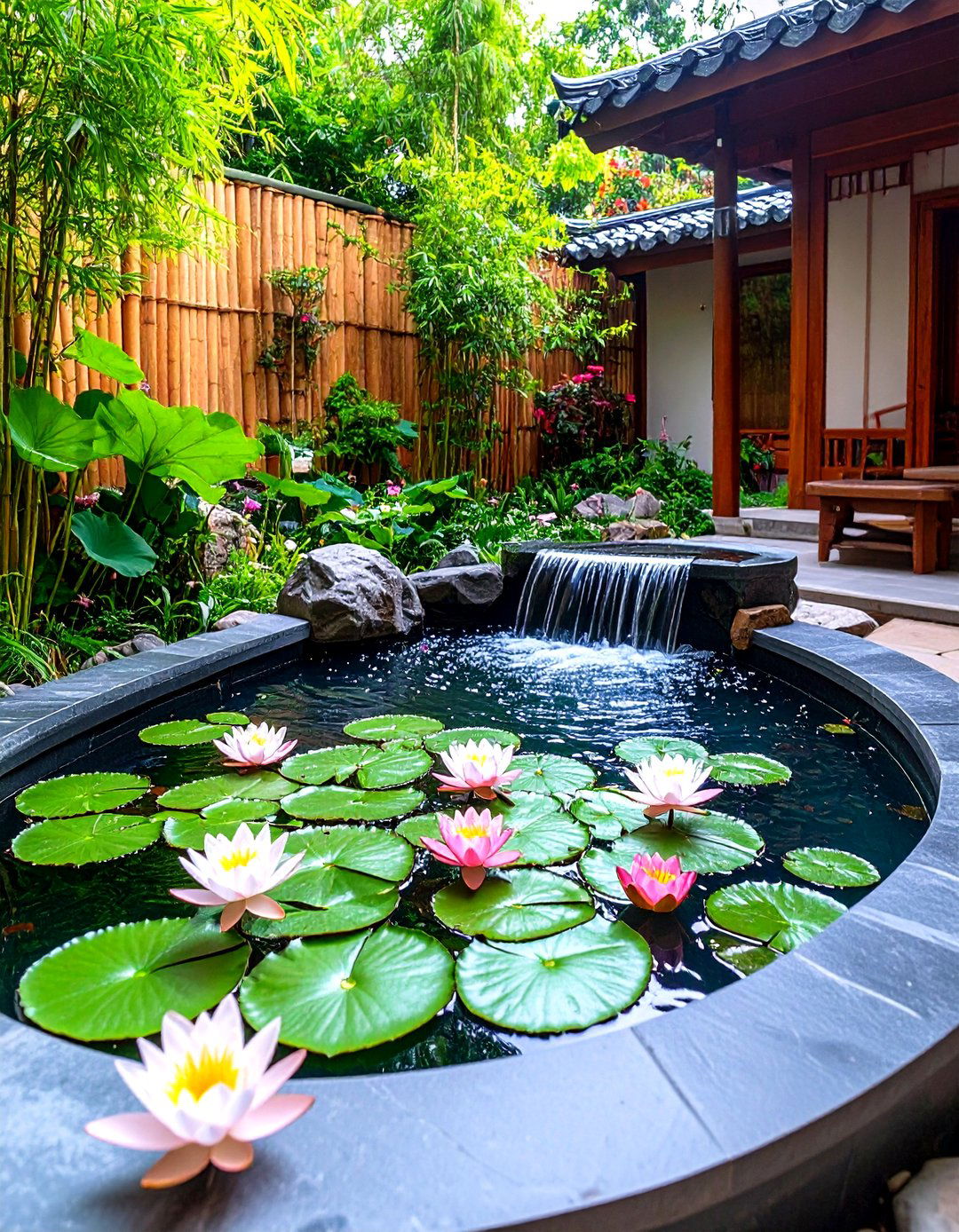
Wide, shallow basins invite lotus leaves to float in perfect circles, their blooms hovering like porcelain teacups in summer heat. Choose fiberglass or stone containers at least 40 centimeters deep to accommodate rhizomes. Add a recirculating bubbler to keep water fresh but gentle — lotus prefer calm surfaces. A low bamboo rail surrounding the pool prevents visitors from leaning too far and accidentally disturbing plants. Glazed ceramic stools placed nearby encourage sitting close enough to watch each petal unfurl at dawn, reinforcing the Asian landscape lesson of patience.
13. Yin-Yang Pebble Mosaic Courtyard
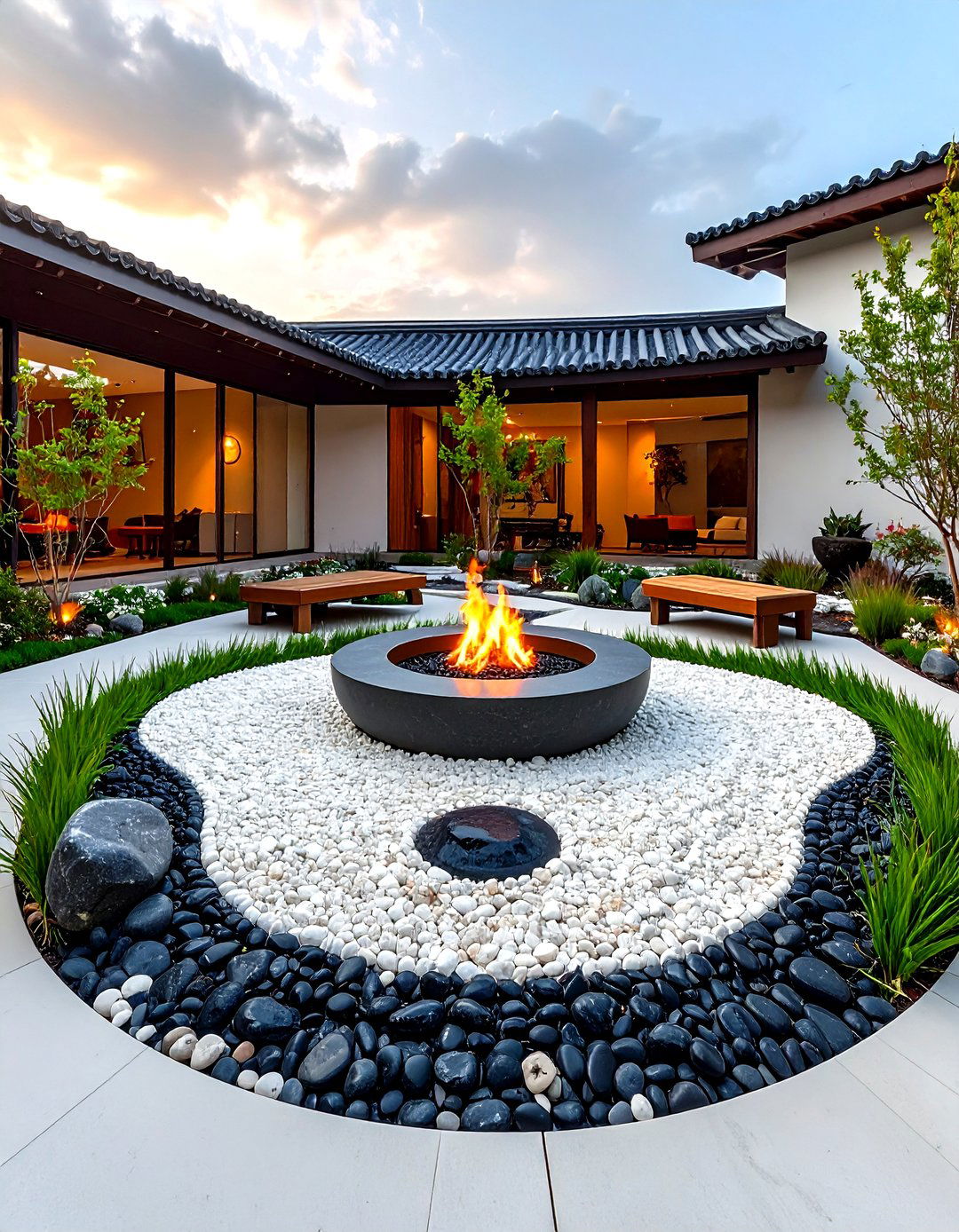
Contrasting black Mexican beach pebbles and white marble chips arranged in the swirling yin-yang symbol turn flooring itself into philosophy. Lay flexible edging to trace the curved pattern; then tamp pebbles level so chairs won’t wobble. Border the mosaic with dwarf mondo grass for a neat living frame. At center, place a single fire pit bowl or granite cauldron that can switch between candles in summer and charcoal warmth in winter. The motif visually reminds guests of balance and interdependence — principles at the heart of classical Asian landscaping.
14. Japanese Maple Shade Cluster for Seasonal Drama

Few plants deliver four-season theater like Acer palmatum. Group three cultivars — one green lace-leaf, one red upright, one coral-bark — so their textures and colors interplay. Underplant with evergreen boxwood clouds and springtime hellebores to ensure year-round under-story interest. Maples cast delicate dappled shade perfect for reading benches while their autumn blaze offers the garden’s grand finale. Prune lightly in late winter, removing interior crossing branches to highlight natural form; over-training robs them of the graceful silhouette prized in Asian landscapes.
15. Fragrant Sakura Walkway Celebrating Renewal
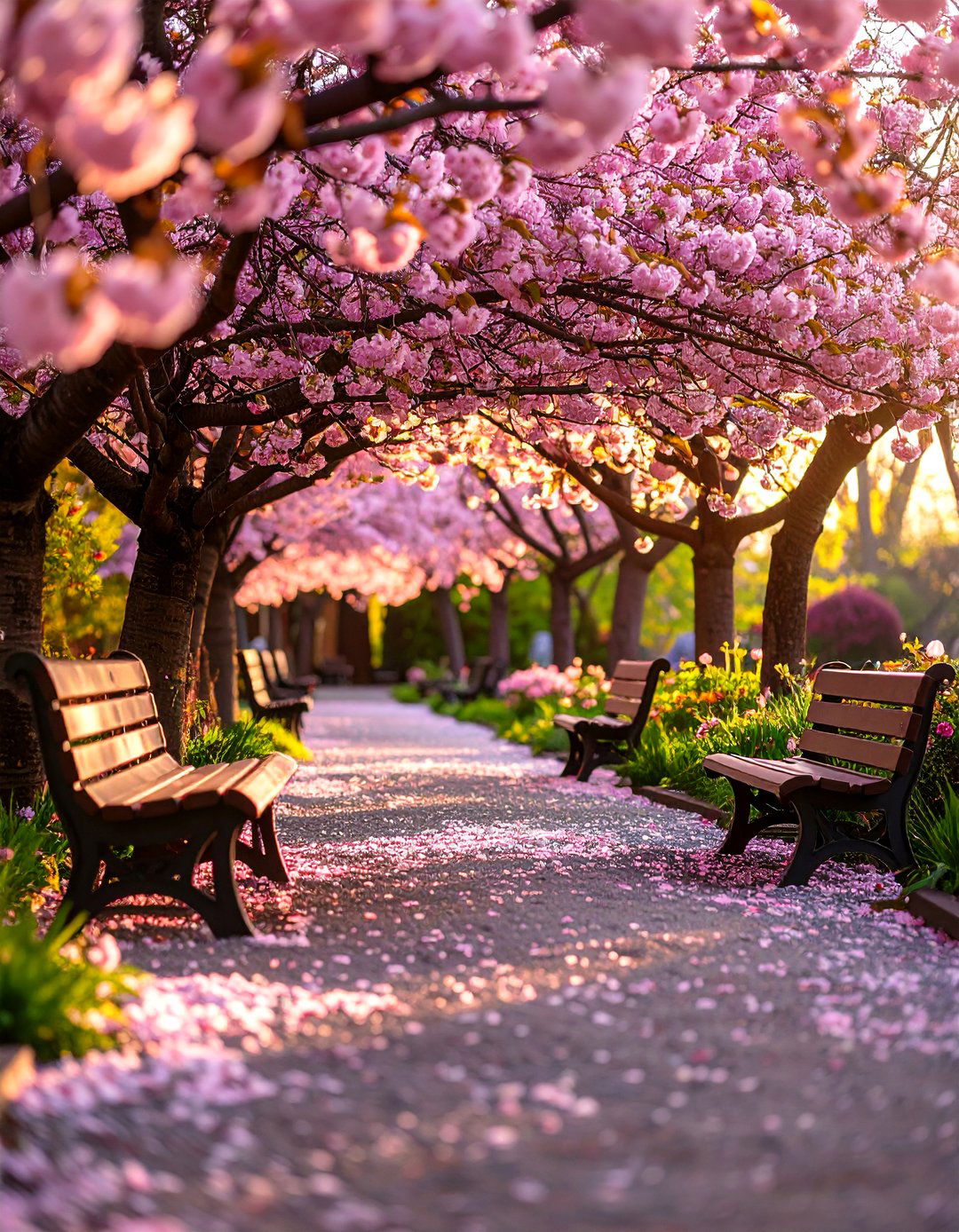
Cherries aren’t just for Japanese parks; dwarf cultivars such as Prunus ‘Kojo-no-mai’ thrive in modest yards. Plant them on alternating sides of a gravel walk so petals float down like pale confetti each March, softening hard surfaces. Spring fragrance carries on evening breezes, making strolls feel festive yet contemplative. Ground-layer bulbs — snowdrops and early crocus — mirror the ephemerality theme by blooming briefly beneath bare branches before leaves appear. A rhythmic bench placement every five meters allows visitors to pause and appreciate fleeting beauty, a hallmark of Asian landscape philosophy.
16. Shishi-Odoshi Bamboo Water Spout for Subtle Sound

The gently startling “clack” of a pivoting bamboo deer scarer punctuates stillness, heightening awareness of surrounding silence. Install the spout so water drips steadily from a hidden hose, filling the tube until it tips and empties. Position it near a window or seating area; audible interest carries further than visual details. Surround with blue-gray river stones and moisture-loving hostas to hide plumbing. Because it runs on low flow, the feature accommodates drought-restricted zones yet injects a playful note into sober Asian landscaping.
17. Scholar’s Rock Meditation Corner for Intellectual Appeal
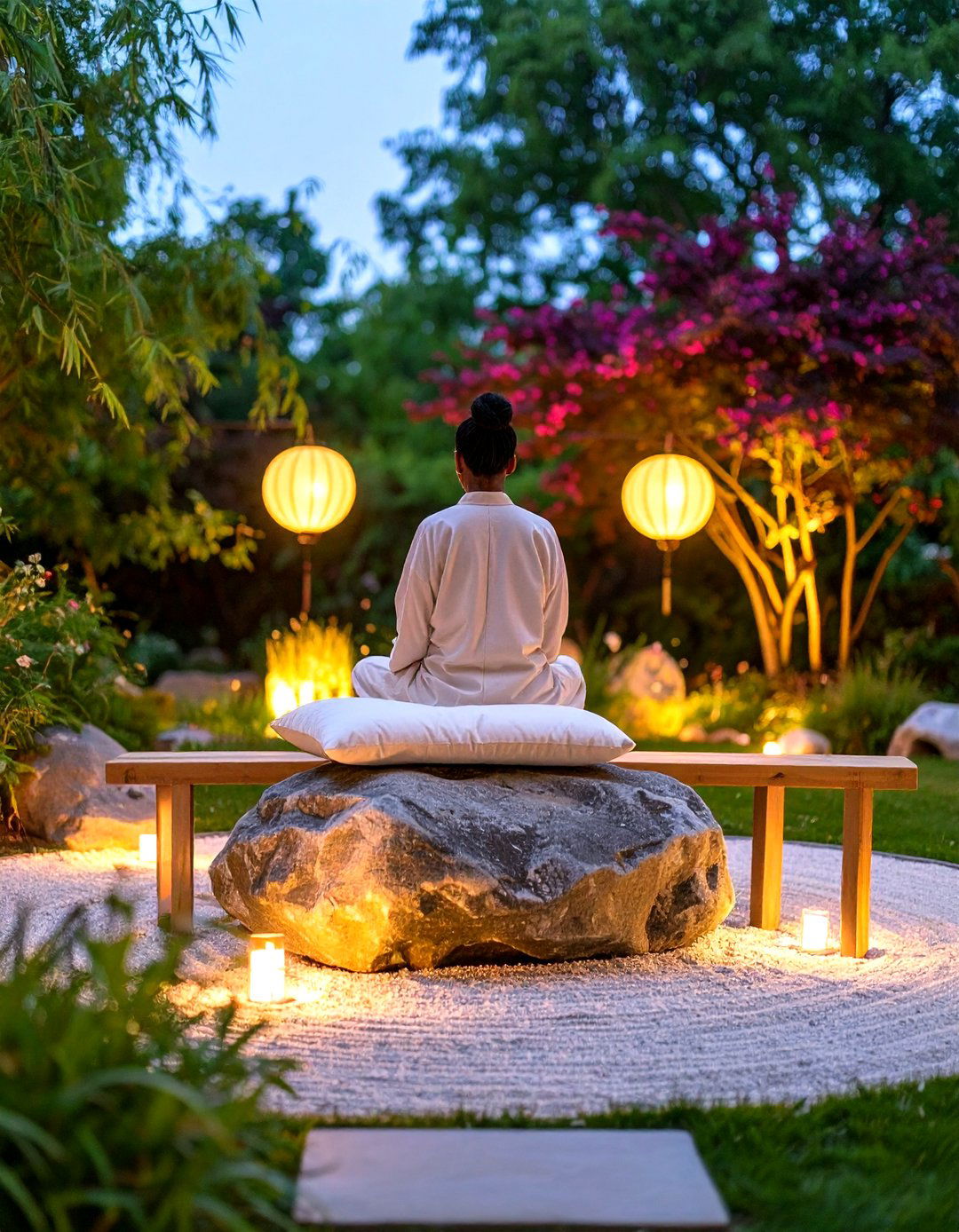
Textured limestone or granite “gongshi” rocks evoke mist-shrouded mountains and stimulate contemplative thought. Place a single tall specimen on a raised plinth of reclaimed timber set within a cushion of dwarf bamboo. Add a backless stone bench positioned three meters away — far enough for full view, close enough to study crevices. A subtle uplight at twilight projects peaks and hollows onto an adjacent wall, inviting evening reflection. The installation channels the tradition of Chinese literati who prized dramatic stones as catalysts for poetry and painting.
18. Ornamental Grass Border with Gravel for Low-Water Asian Landscape
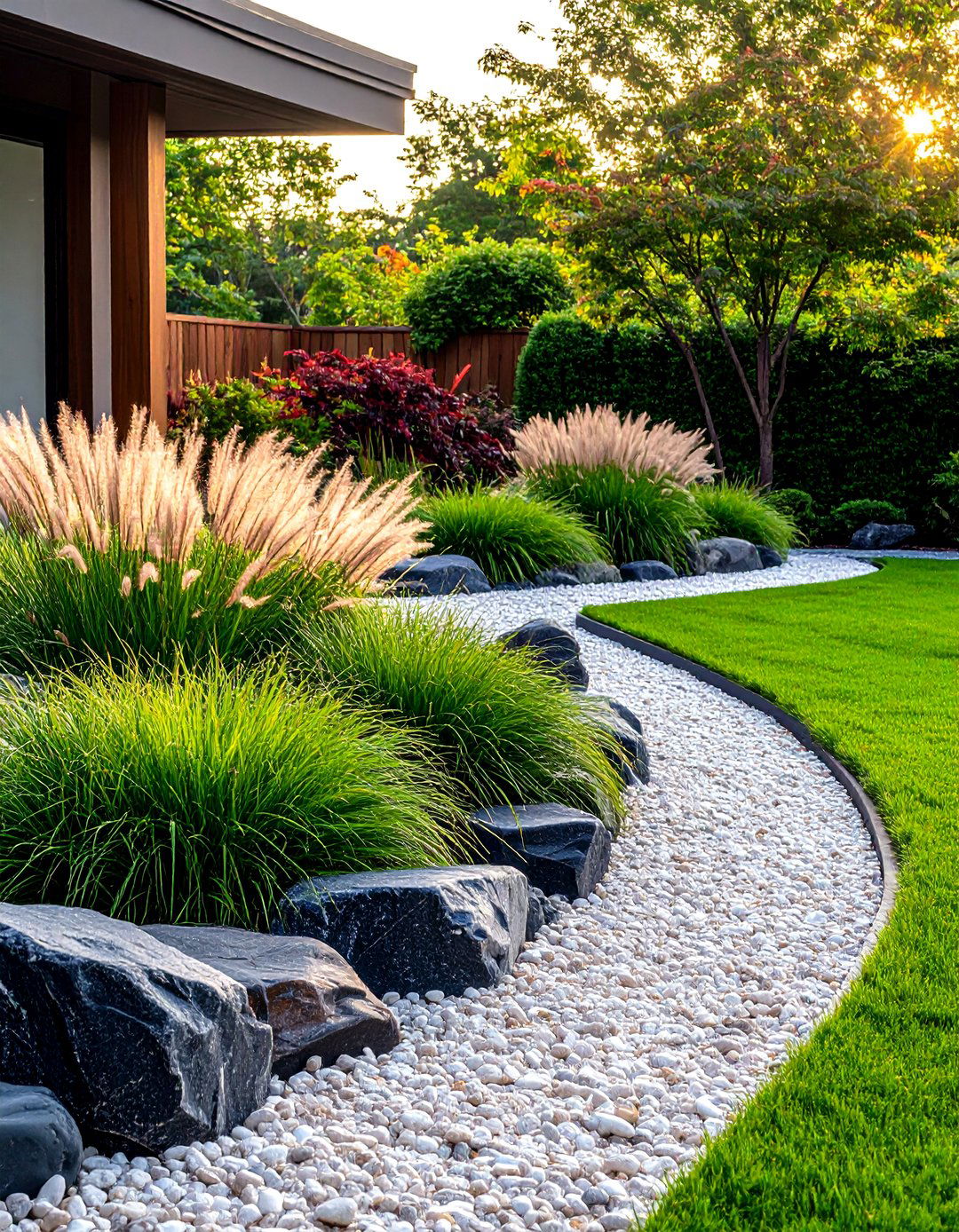
Unlike thirsty lawns, a sweeping band of dwarf fountain grass or Japanese blood grass paired with pale granite gravel thrives on minimal irrigation while delivering drama in wind. Lay heavy-duty weed fabric beneath gravel, then tuck grasses through X-shaped cuts to keep maintenance low. The feathery plumes catch sunrise backlight, filling the space with shifting shadows that mimic ripples on water. Add sporadic dark basalt boulders for contrast and to ground the composition. This modern take proves Asian landscaping can stay climate-wise without losing elegance.
19. Timber and Shoji Pergola Extending Living Space Outdoors

Craft a pergola from cedar posts and top it with translucent polycarbonate panels framed like shoji screens. The filtered light evokes tatami-room softness while blocking harsh midday sun. Train evergreen star jasmine along one side for year-round perfume, and suspend weather-resistant paper lanterns for nighttime glow. Furnish the platform with low teak seating and a fire-table to encourage cross-legged gatherings. By blending traditional lattice patterns with modern weatherproofing, the structure merges indoor comfort and Asian landscape aesthetics seamlessly.
20. Rooftop Asian Pocket Garden for Urban Calm
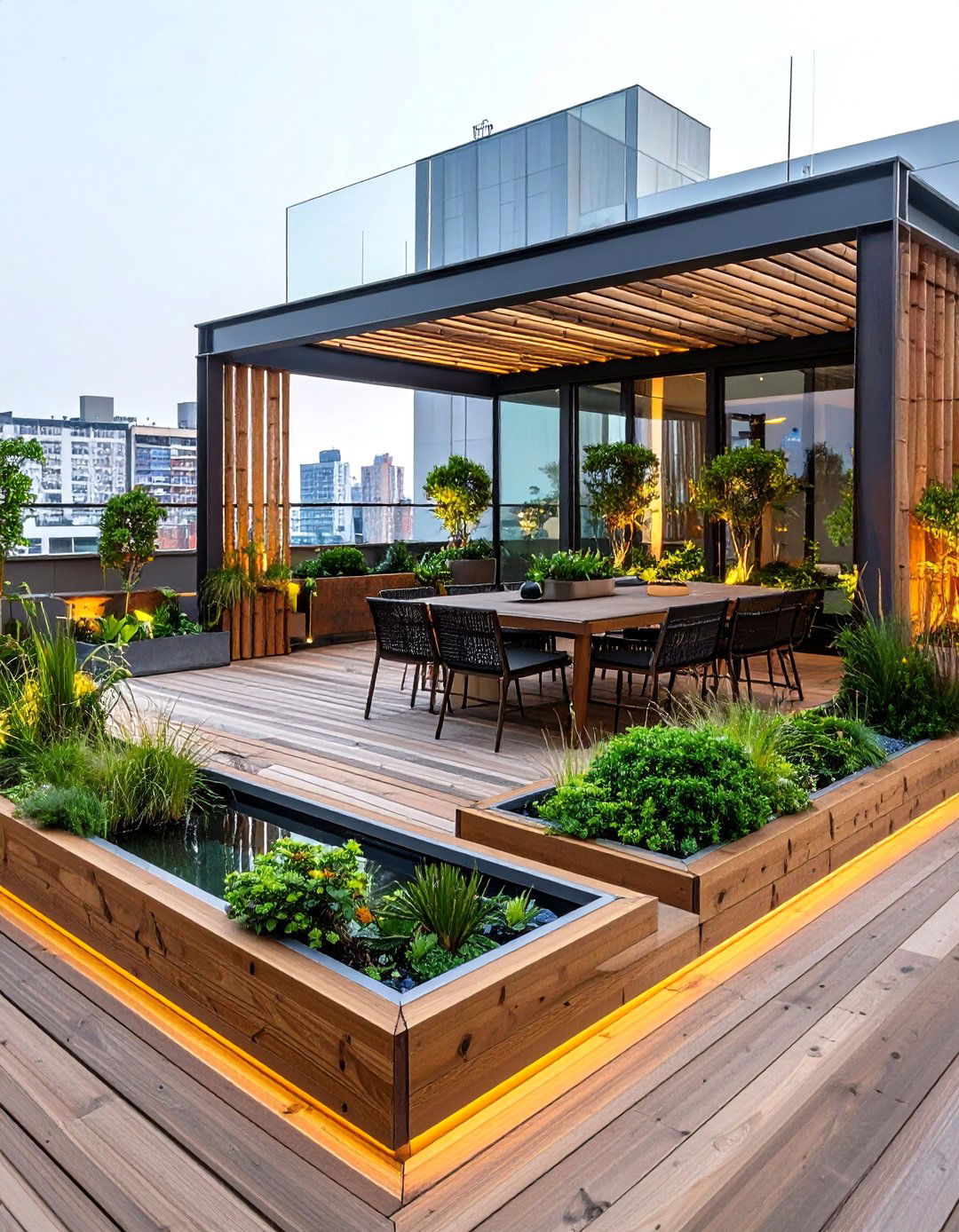
When ground space is scarce, a lightweight planter matrix can turn flat roofs into contemplative oases. Use fiberglass troughs filled with expanded clay aggregate to keep loads low, then arrange dwarf pines, sedums, and hardy grasses in asymmetrical clusters. Add a shallow reflecting basin of galvanized steel to mirror sky and city lights. Wind-rated bamboo screens break up rooftop gusts while granting privacy from taller neighboring buildings. Solar LED accent lights recharge by day, ensuring the skyline-edge garden glows against night concrete — a dramatic testament to adaptable Asian landscaping.
21. Lantern-Lit Gravel Path Guiding Evening Strolls
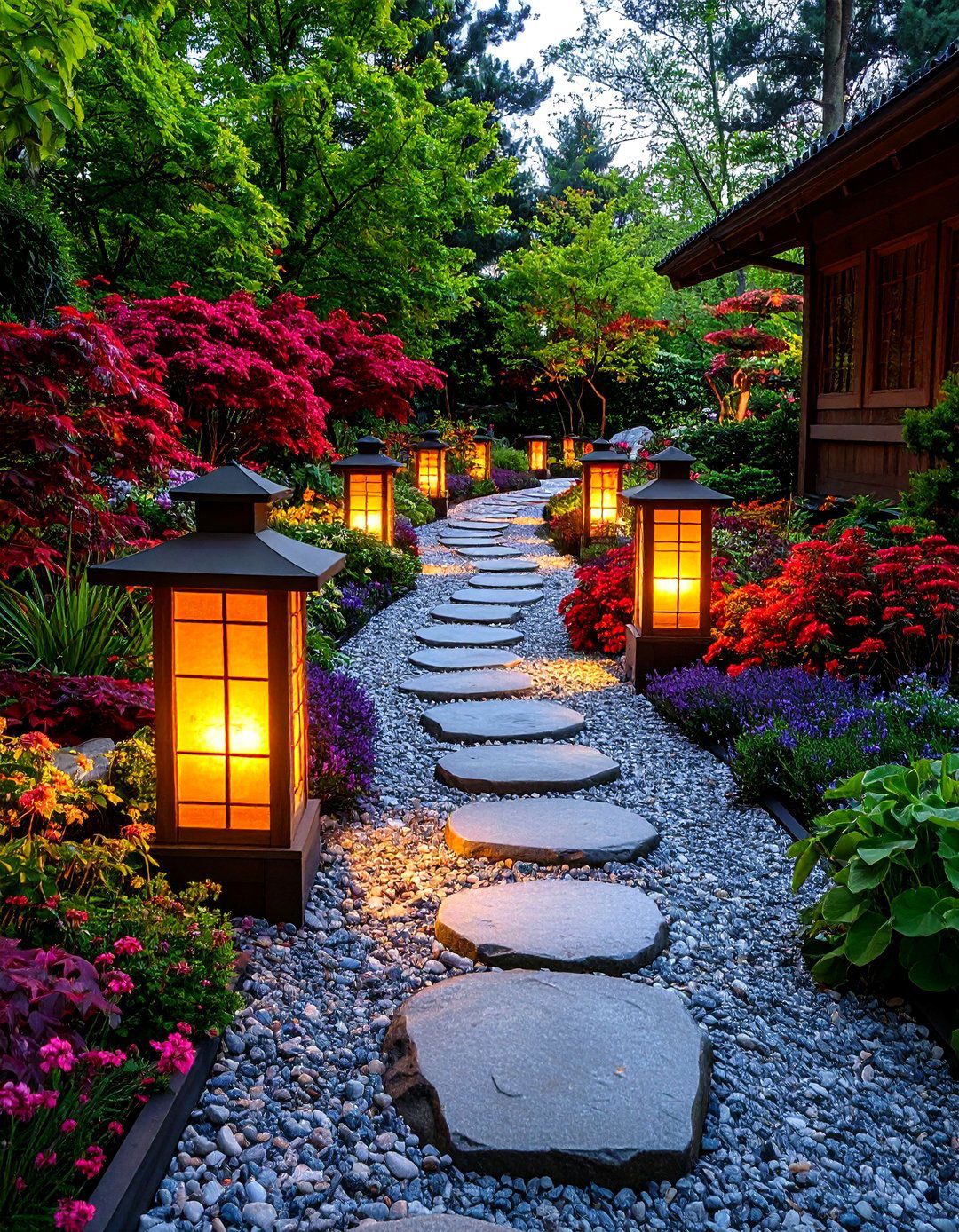
Placing knee-high wooden lanterns every three meters along a gently curving gravel path turns dusk into a magical hour. Choose LED bulbs at 2700 K to match candle warmth without fire hazards. Encasing wiring in PVC conduit beneath gravel keeps maintenance straightforward. Low plantings — heucherellas, creeping thyme — soften path edges, their leaves catching lantern light like tiny mirrors. Because fixtures sit below eye level, light pools downward, preserving dark sky while safely marking footing. Even the quickest walk for herbs feels ceremonial under this Asian landscape treatment.
22. Tropical-Zen Courtyard Combining Palms and Stone
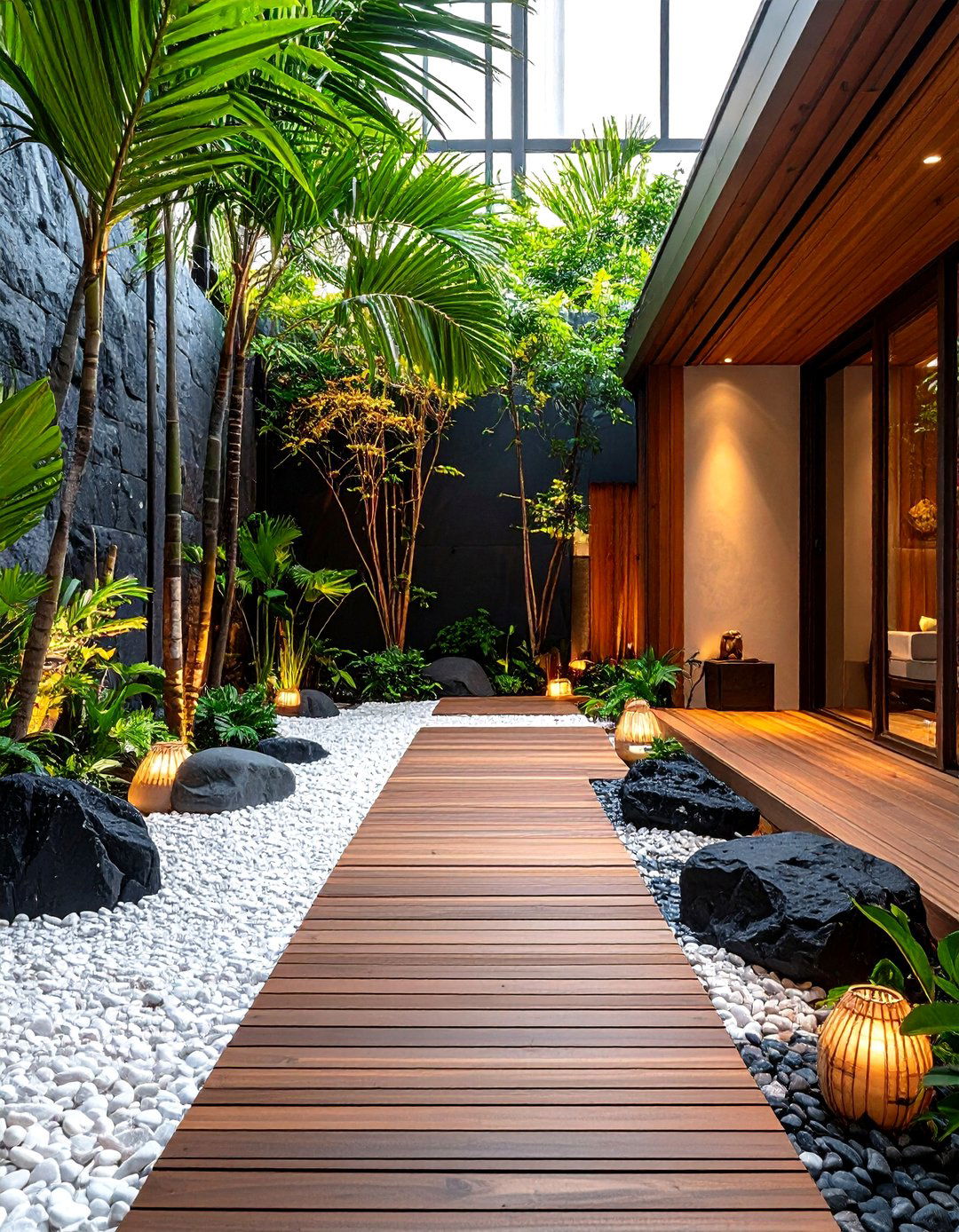
In hot, humid regions, blend Asian minimalism with tropical exuberance: cluster windmill palms against an L-shaped basalt wall, then carpet the foreground with white gravel punctuated by black lava rocks. Slender paths of teak planks float over gravel, keeping feet cool. Add a simple rectangular plunge pond reflecting palm fronds and evening stars. Because palms shed minimal litter, gravel remains clean, and the stark plant-hardscape contrast translates classic Asian landscaping restraint into equatorial climates effortlessly.
23. Naturalistic Stream Meander Linking Zones
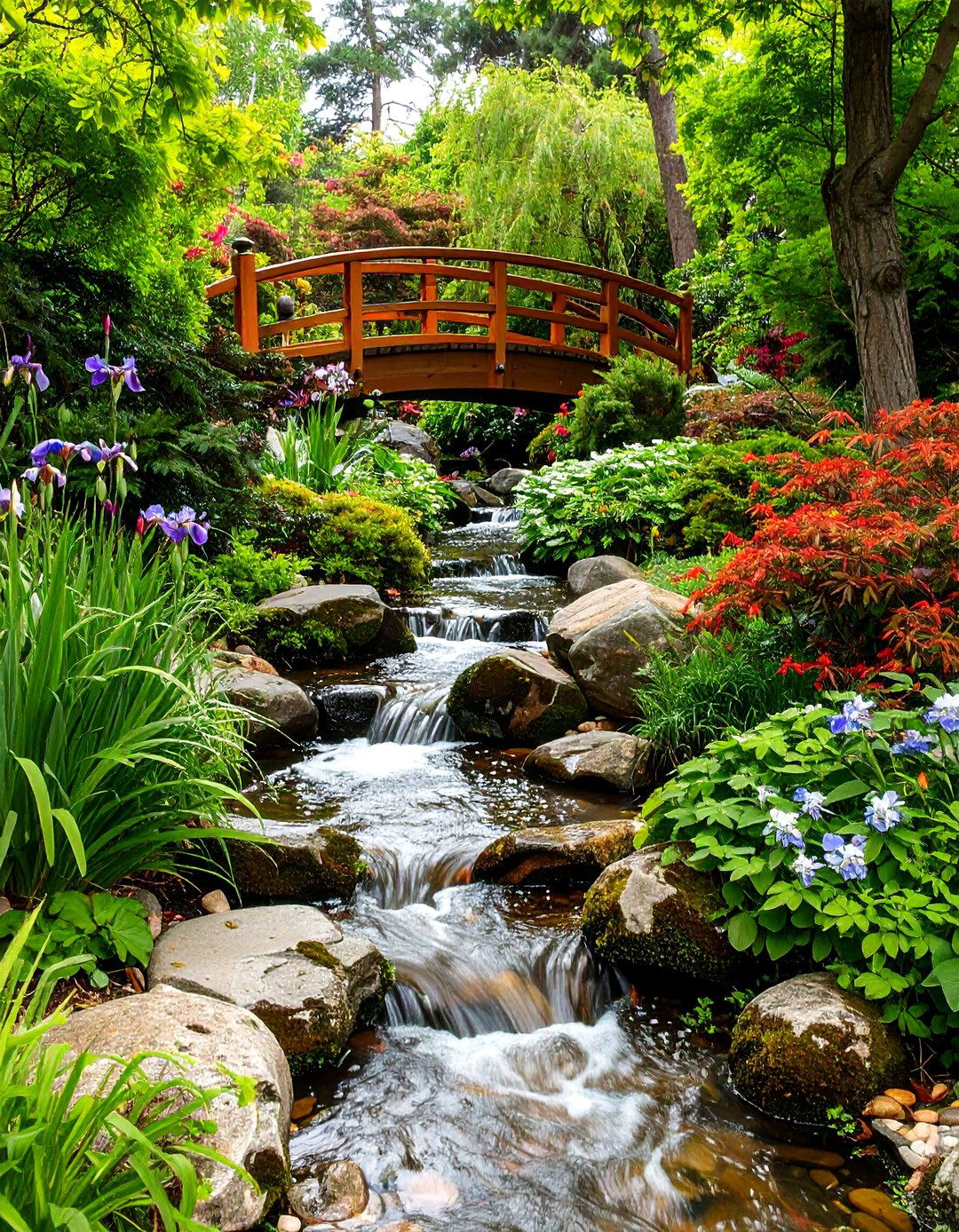
A shallow stream winding through the yard unifies disparate planting beds while showcasing seasonal change. Line banks with mixed cobbles and plant Japanese iris, creeping jenny, and dwarf horsetail for layered texture. Footbridges of rough-sawn cedar link patios to lawn, inviting pause at each crossing. Varying channel width creates quiet pools and gentle riffles, attracting birds and beneficial insects. Powered by an efficient variable-speed pump, flow adjusts to rainfall patterns, illustrating the Asian landscape tenet of mimicking nature rather than overpowering it.
24. Miniature Zen Tray Garden for Balcony Meditation
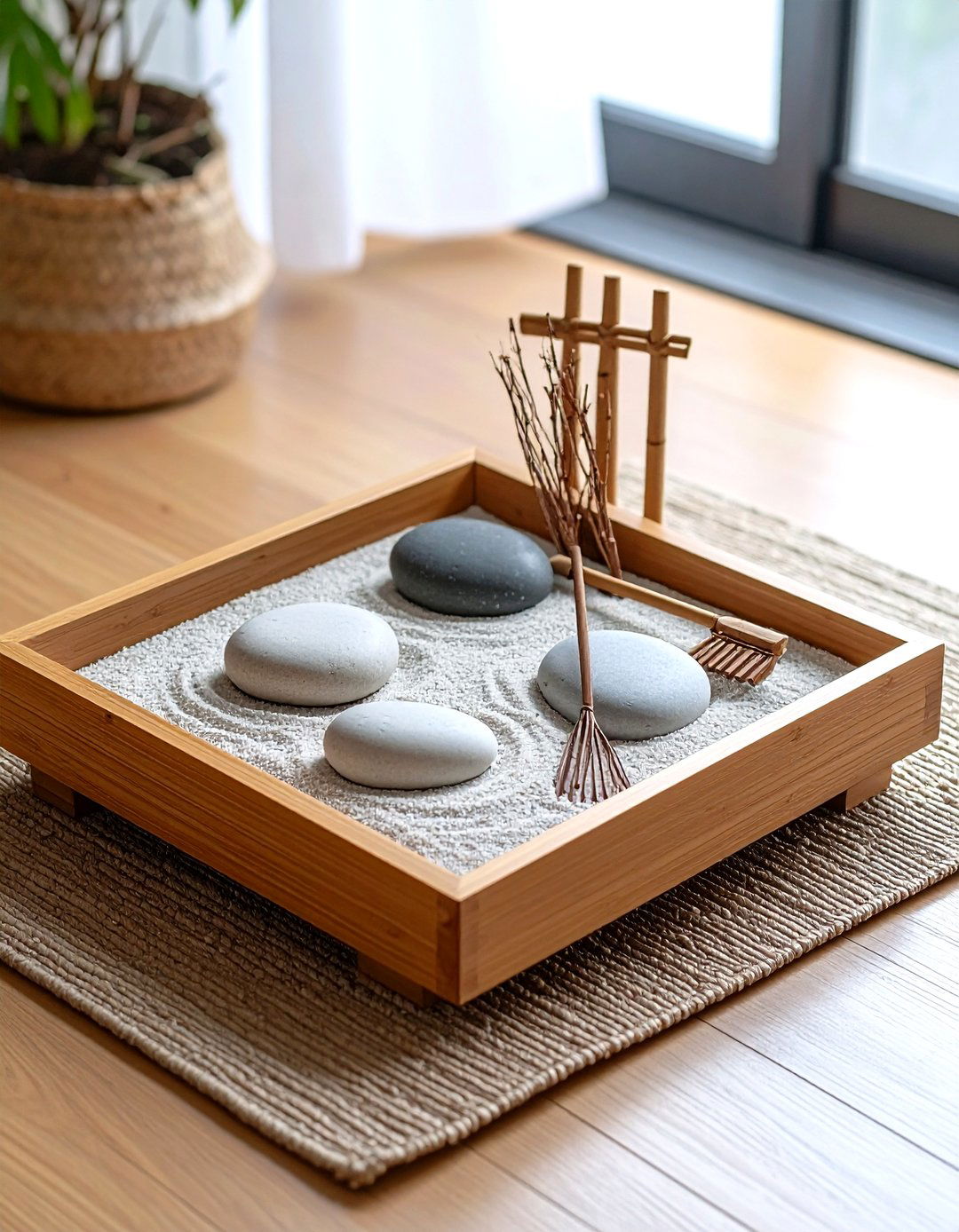
Not everyone can dig in soil, but a 60-centimeter-square wooden tray filled with fine sand brings a zen landscape to apartment dwellers. Arrange a trio of small river stones, a dry twig “bridge, ” and a ceramic pagoda, then use a mini rake to comb daily patterns. Rest the tray on a low table beside a folding floor cushion so morning coffee doubles as mindfulness ritual. Because the sand is contained, maintenance involves only periodic sifting and topping up — proving Asian landscaping’s spirit scales to tabletop size.
25. Fusion Modern-Asian Deck with Clean Lines
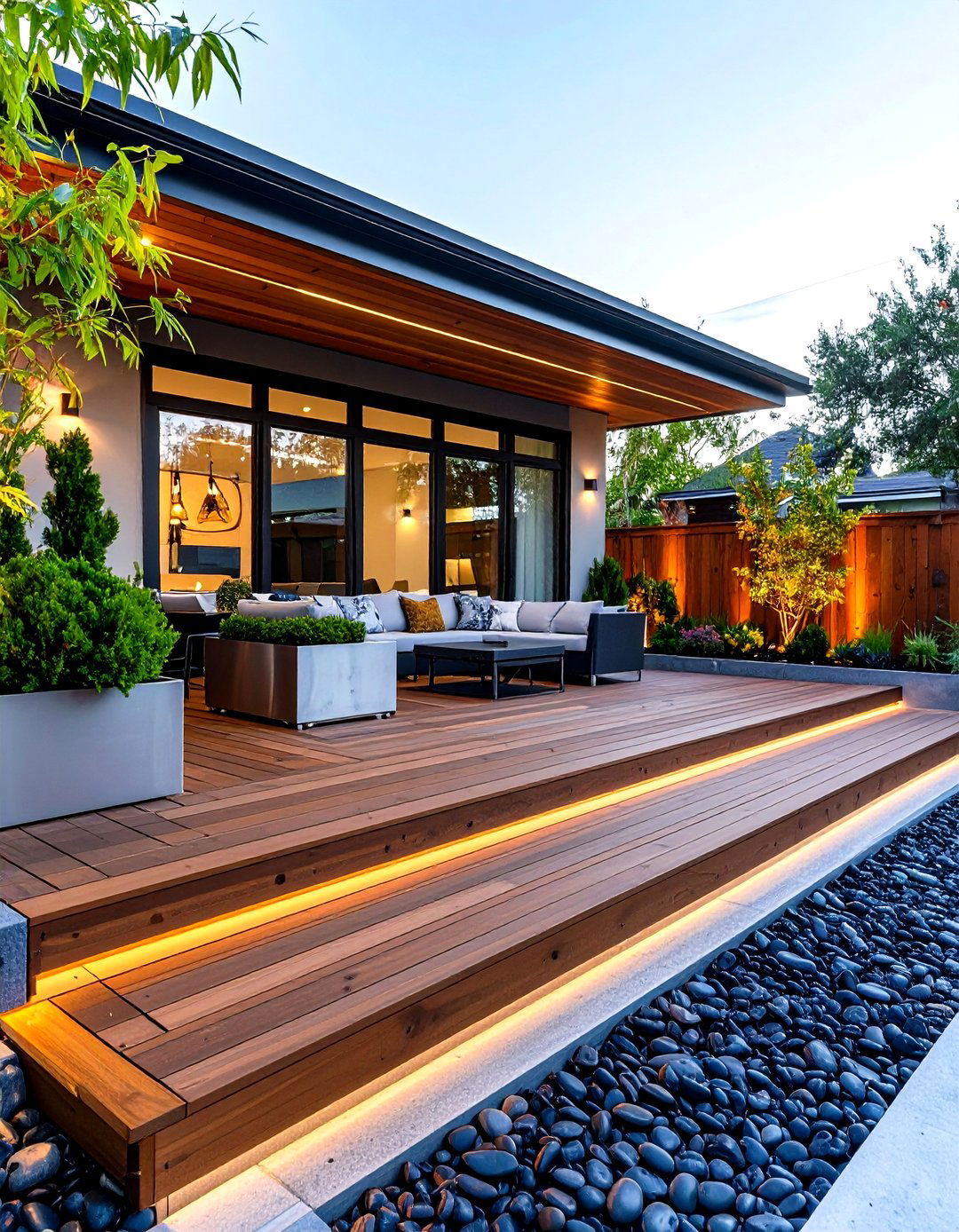
Finally, blend Asian landscape cues with contemporary architecture by installing a floating ipe deck edged in black river pebbles. Embed linear LED strips beneath deck overhangs so light grazes stone like water shimmer. Add low stainless steel planters holding cloud-pruned junipers and dwarf bamboo for sculptural silhouettes. A single concrete fire ribbon provides elemental warmth without disrupting minimalist geometry. The result is a multifunctional outdoor room where family barbecues coexist with evening meditation — proof that Asian landscaping principles can harmonize with modern lifestyles.
Conclusion:
From raked-gravel courtyards to rooftop lotus basins, Asian landscaping offers adaptable blueprints for serenity that respect both tradition and today’s climate realities. These twenty-five ideas reveal how careful balance — solid and void, movement and stillness, shade and light — can turn any plot into a mindful retreat. Whether you choose a single stone lantern or a full koi pond, each element invites slower rhythms and deeper connection to nature, ensuring your outdoor space feels like a personal sanctuary long after the last petals fall.


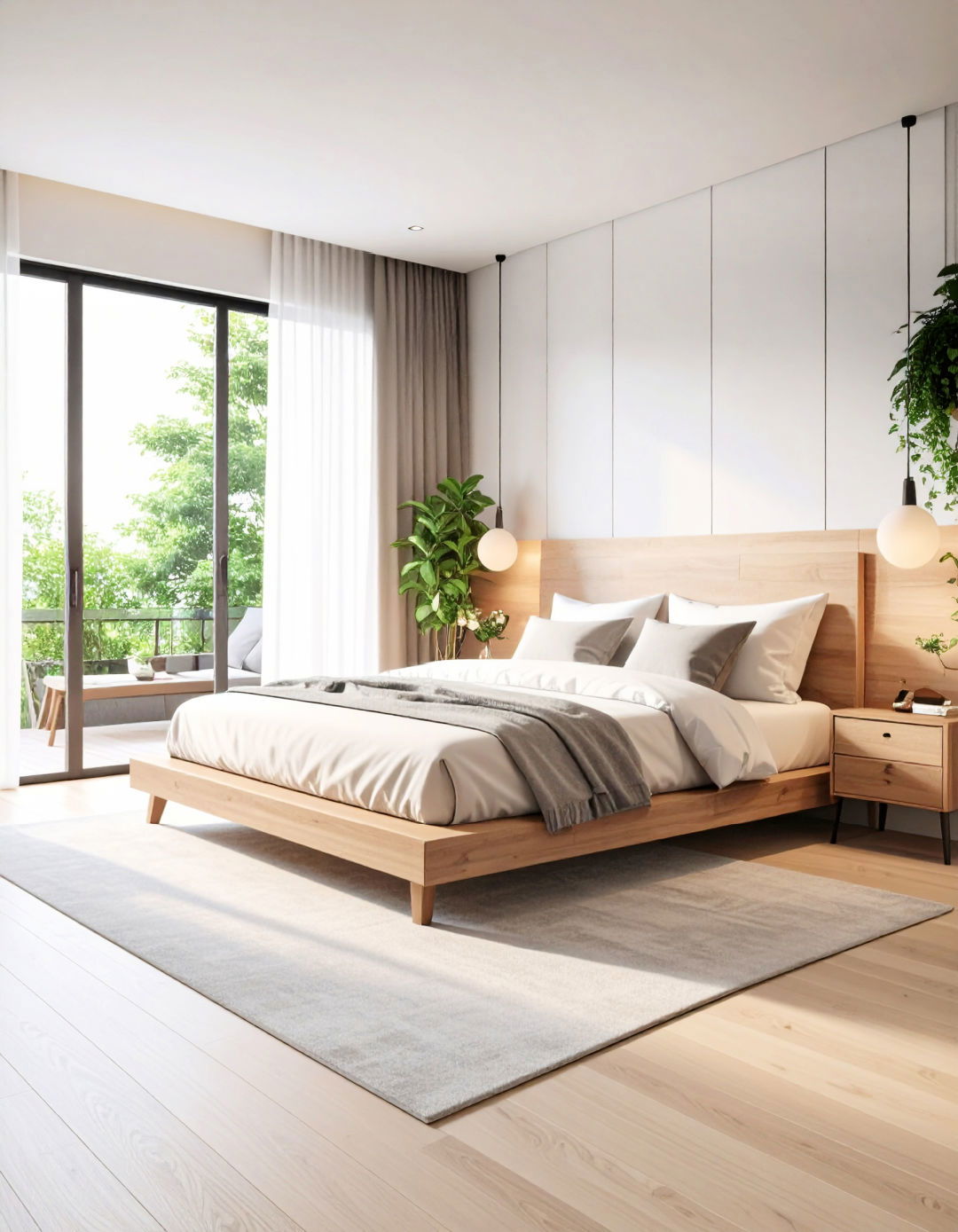

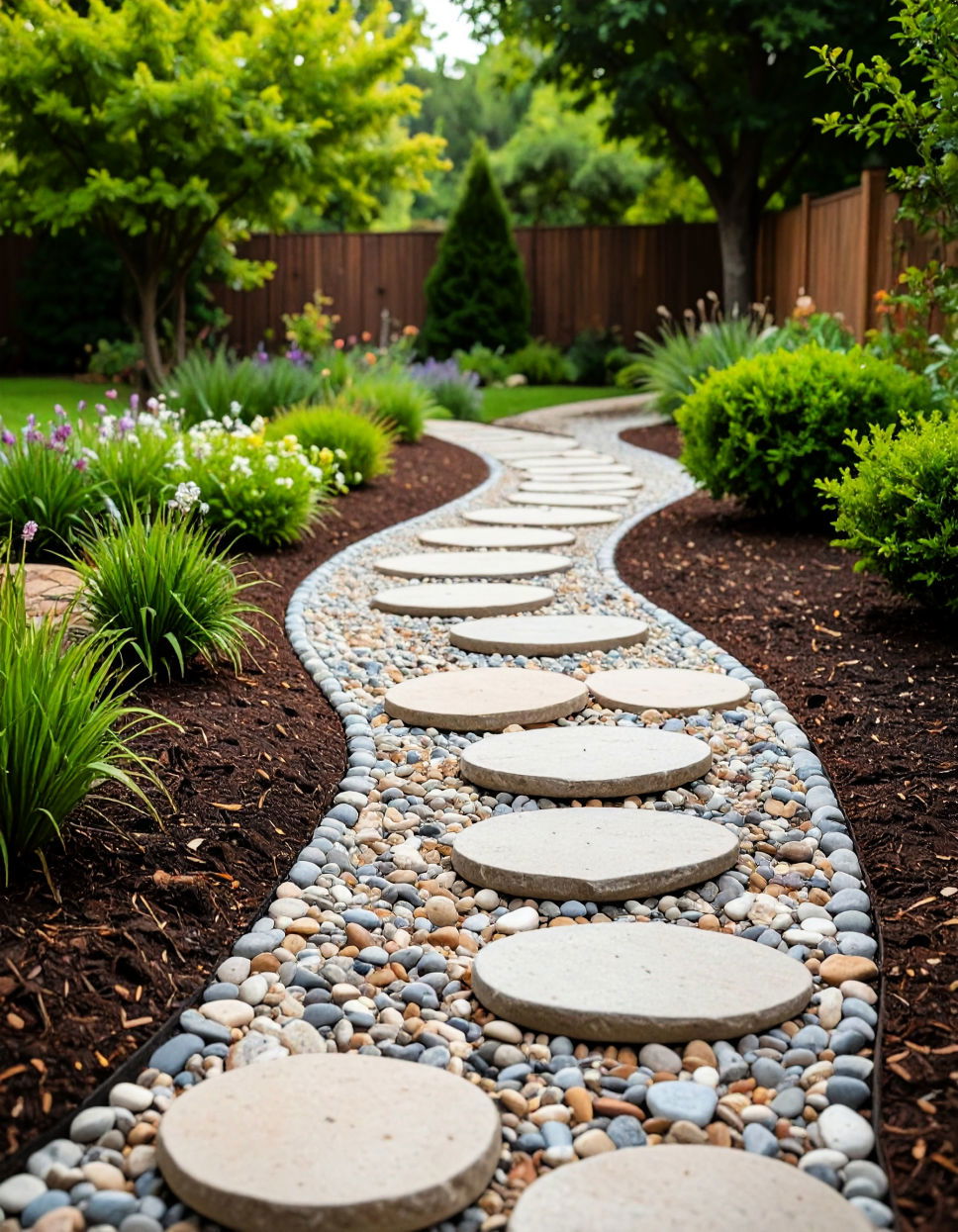
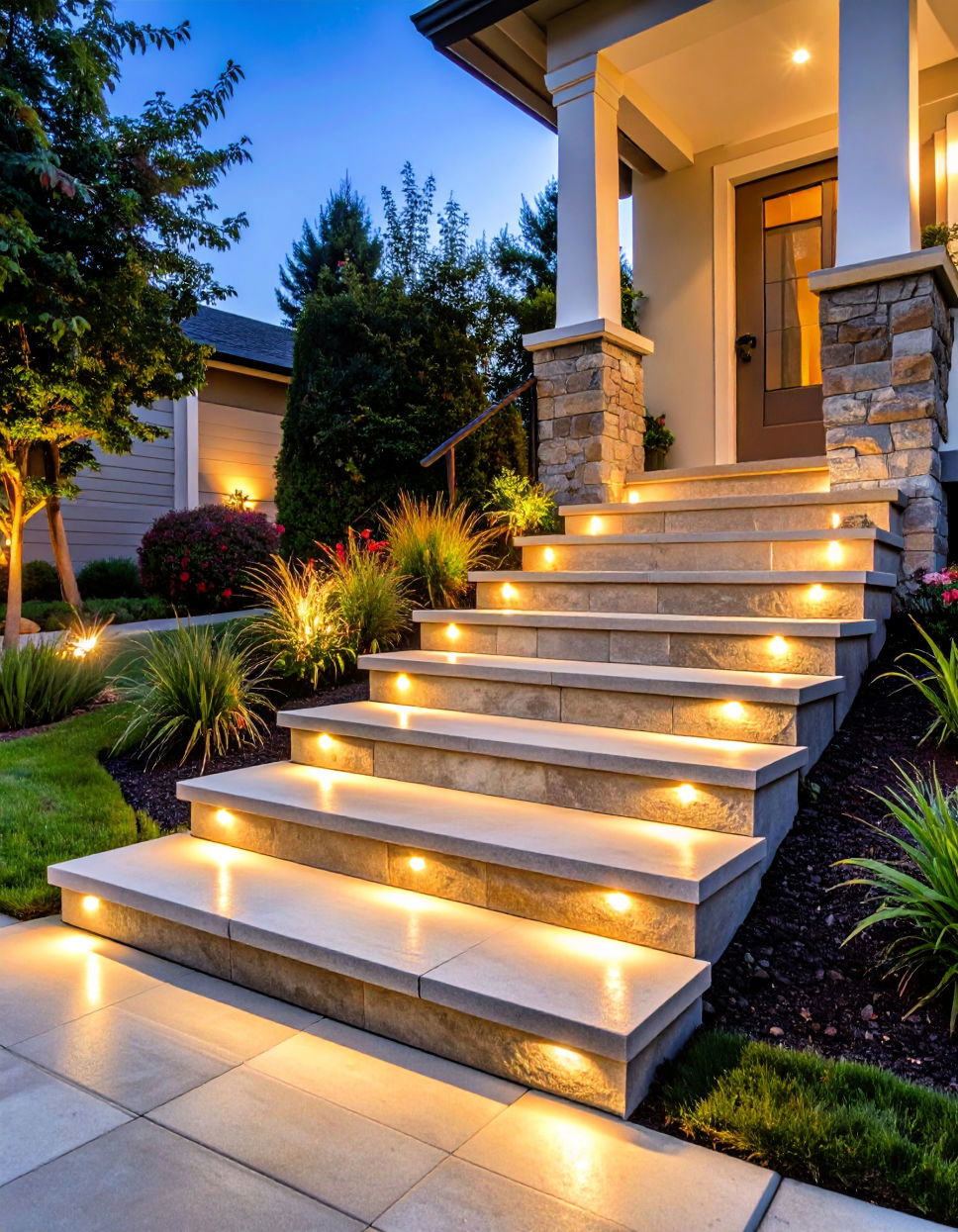
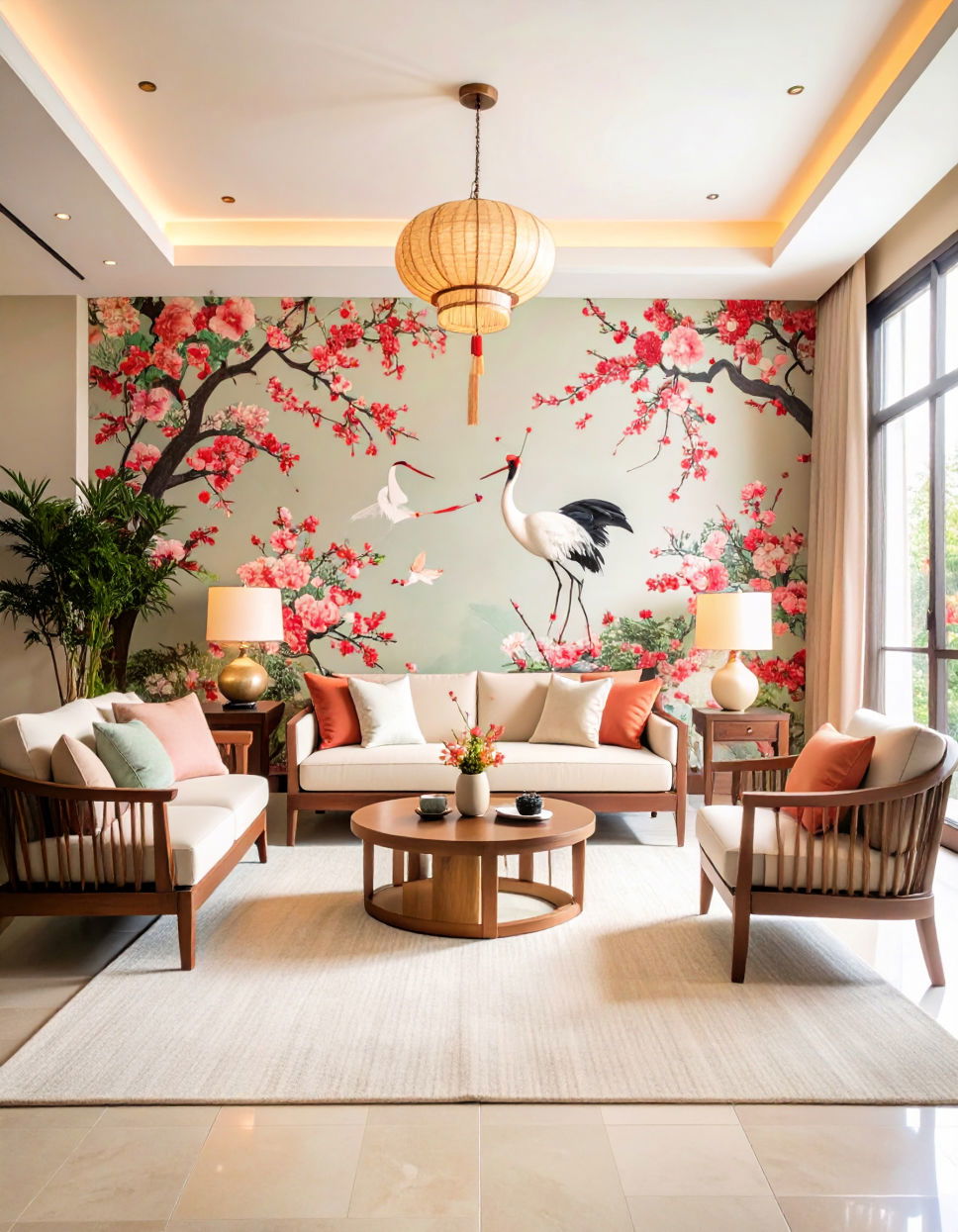
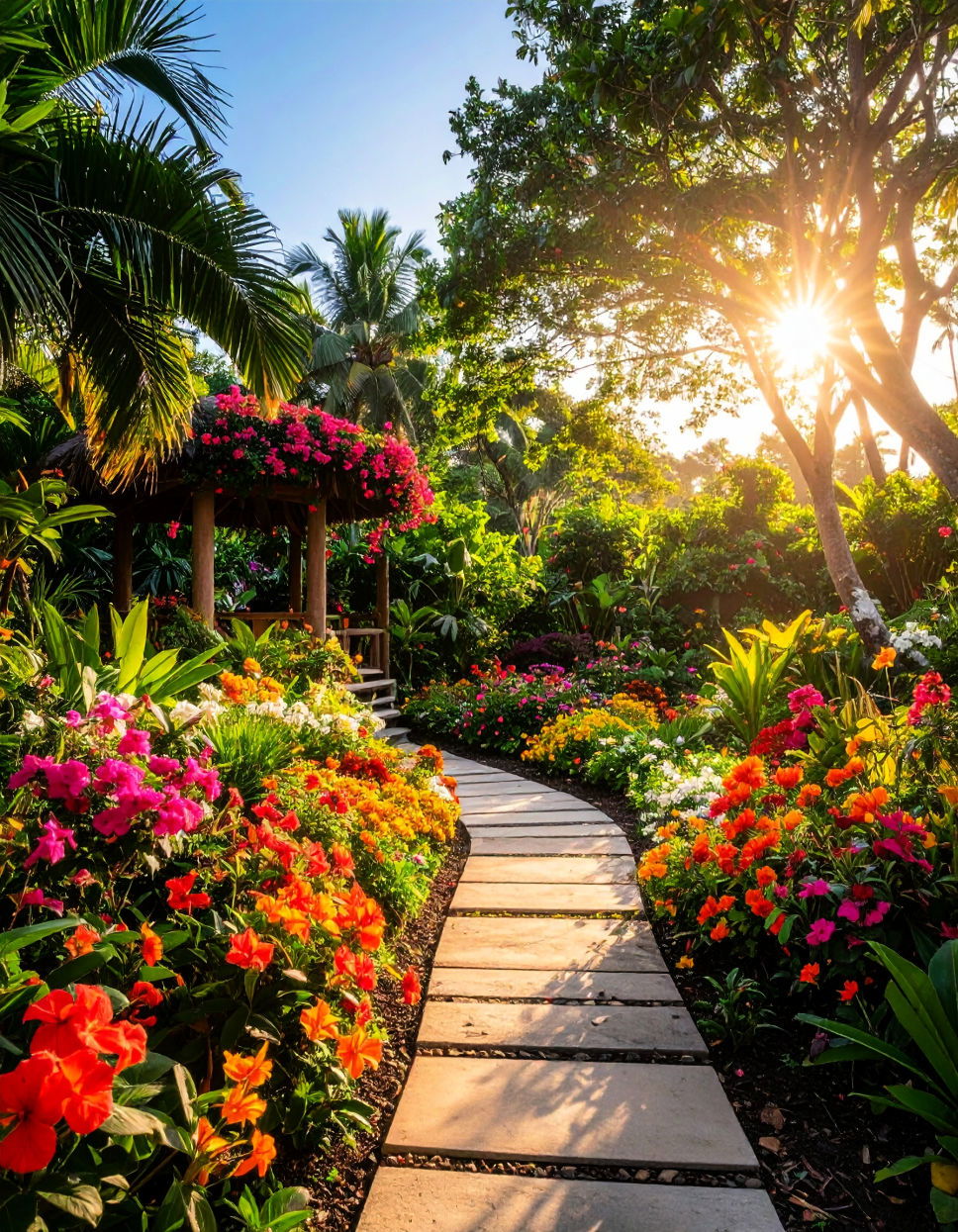
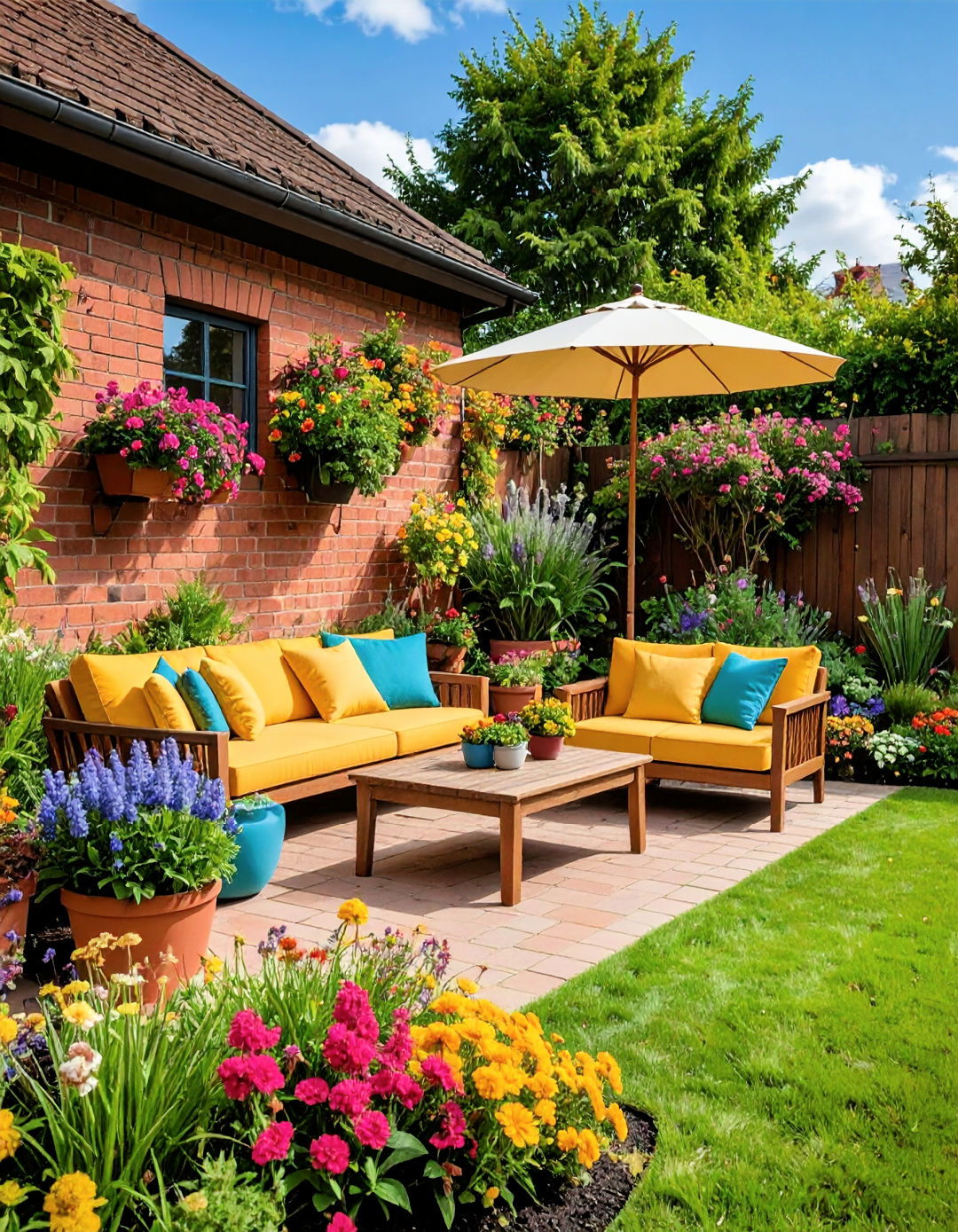


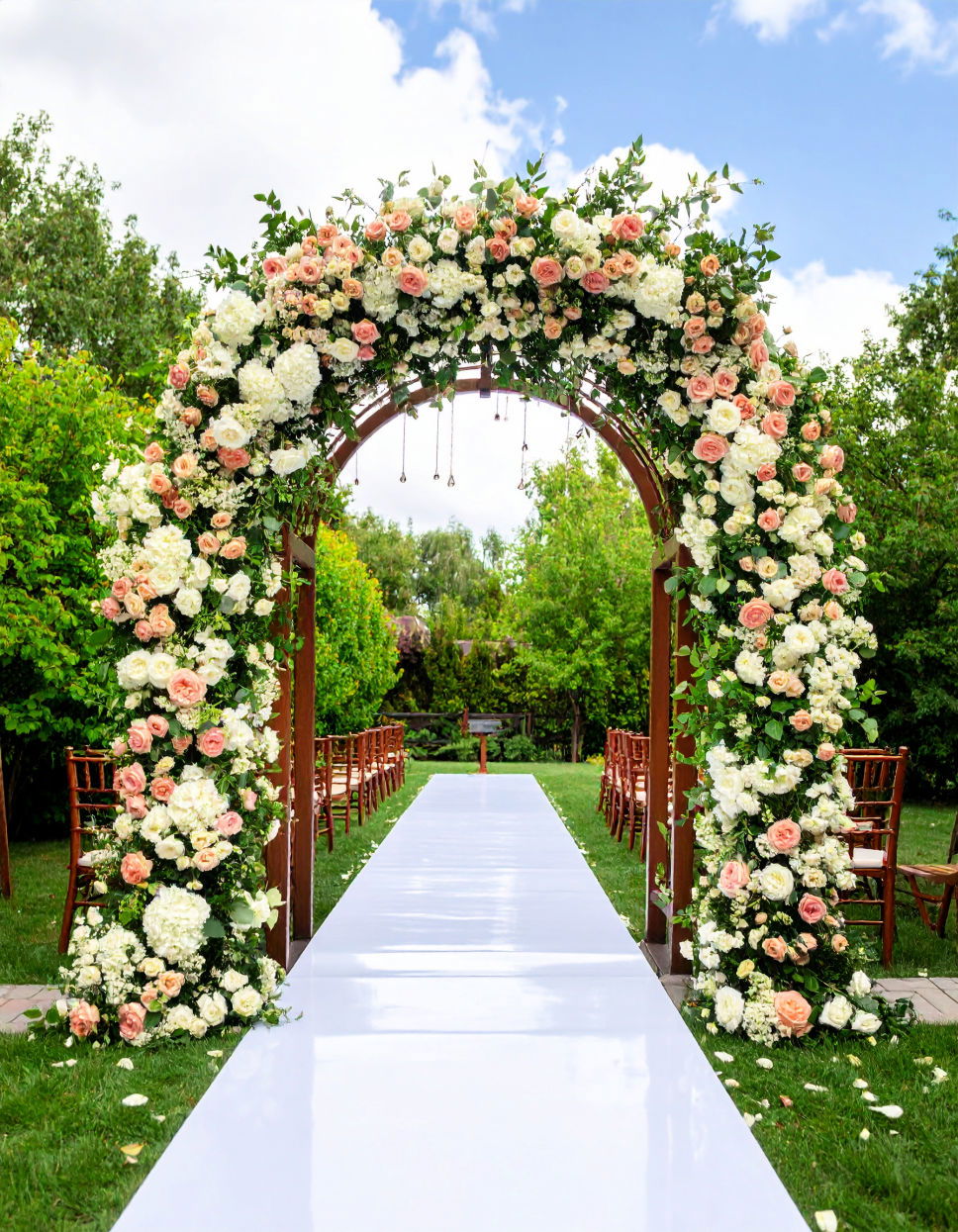

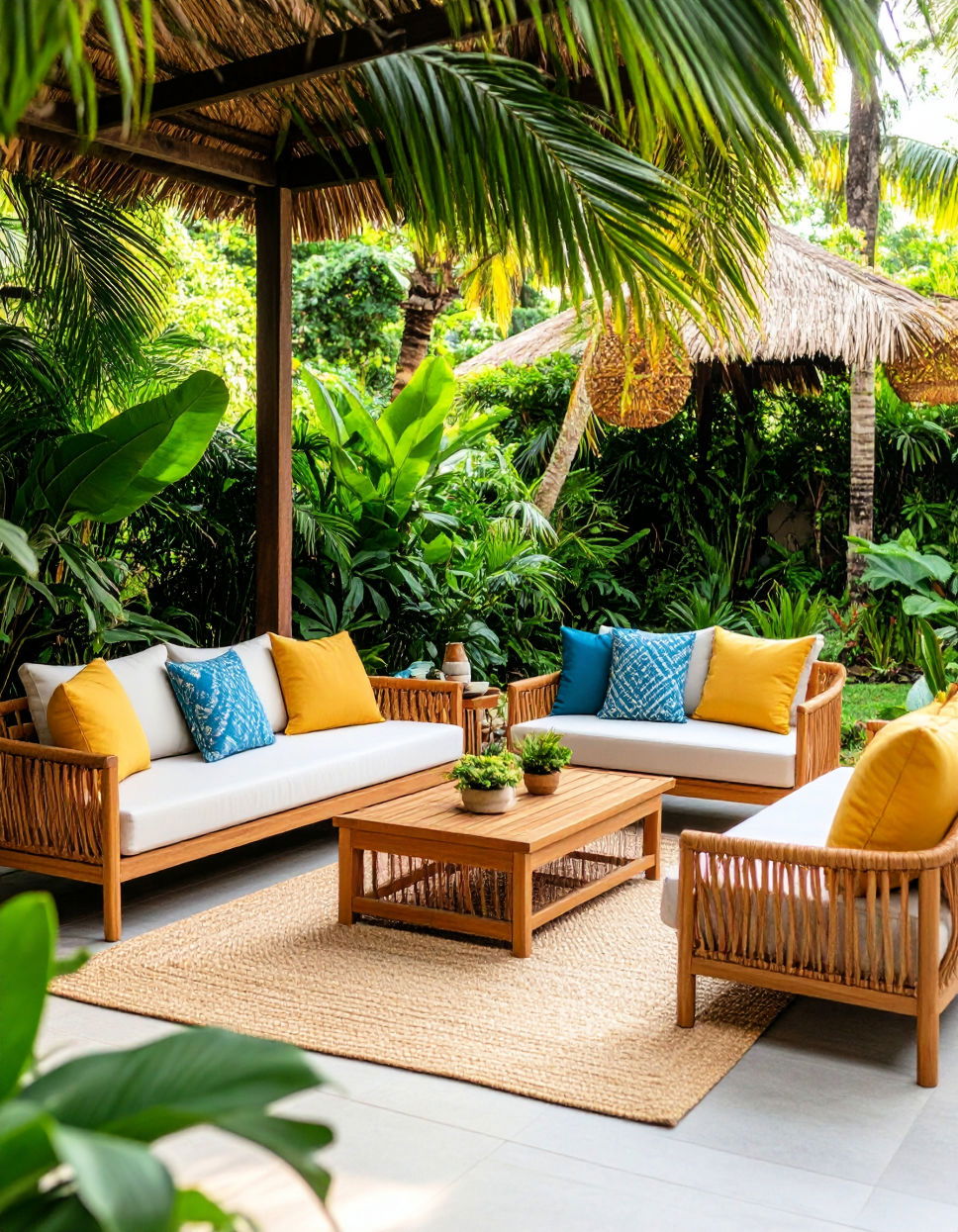

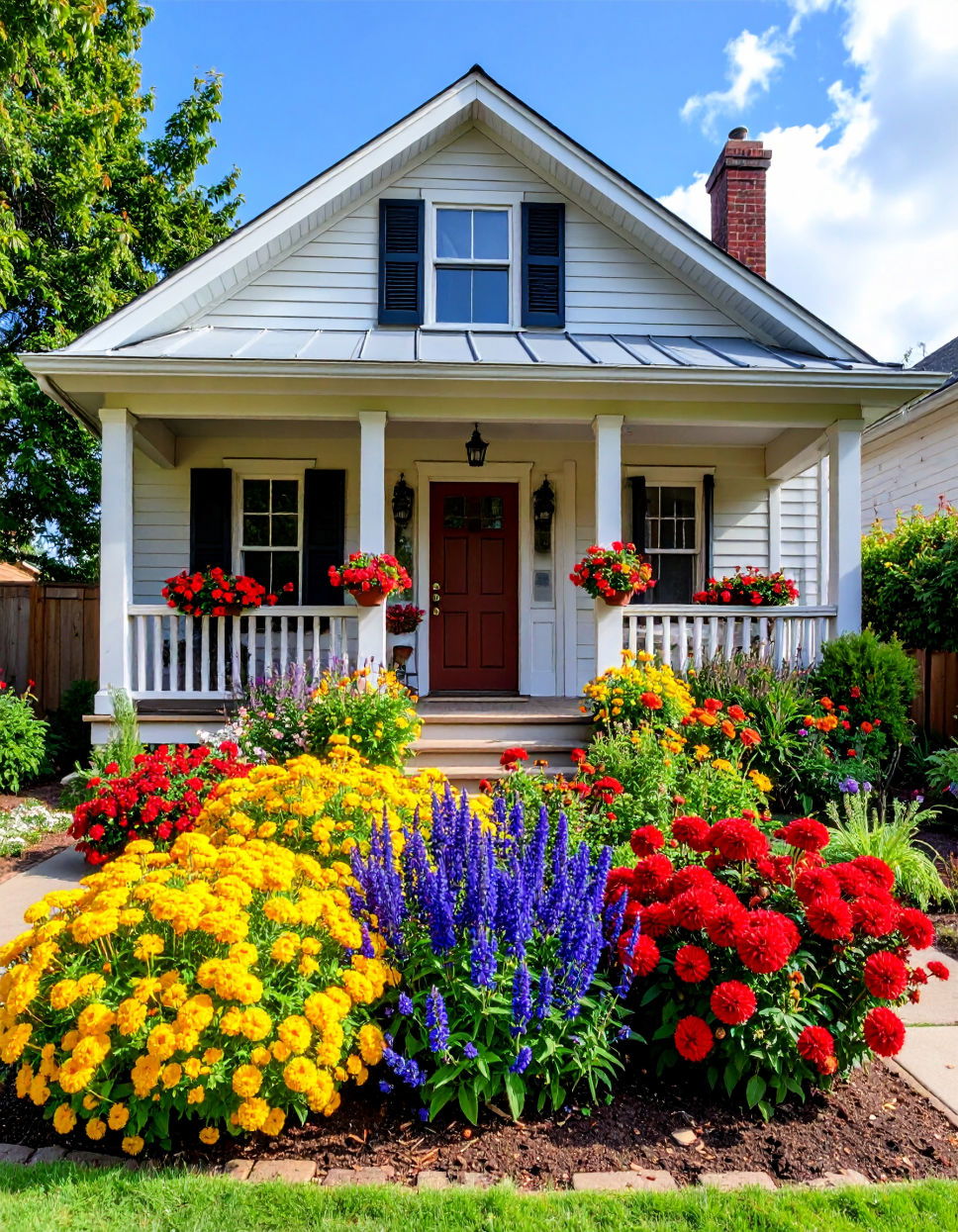
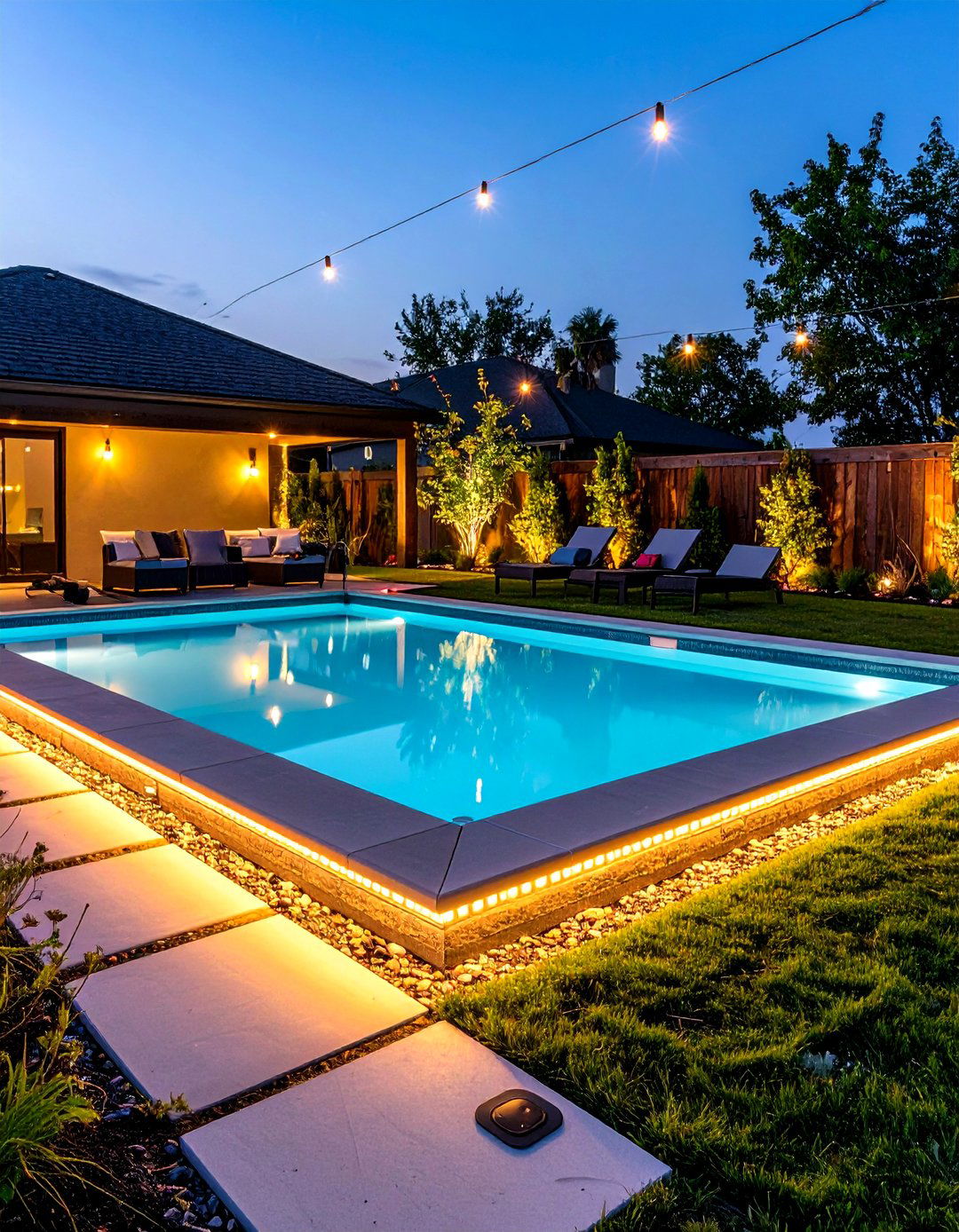
Leave a Reply